 Alanis
Morrisette - (b. 6/1/1974) Alanis
Morrisette - (b. 6/1/1974)
Multi-Platinum-selling Singer, Songwriter - 7
Grammy Awards! Jagged Little Pill - the biggest-selling
female debut LP of all-time! One of the VH1:
100 Greatest Women of Rock & Roll. One
of the most successful singer/songwriters in Rock-n-Roll history,
Alanis Nadine Morissette and her two brothers were raised in Ottawa,
Canada by a French-Canadian father and Hungarian Mother. In her early
youth, Alanis's family moved around a lot, including a stay in West
Germany and attending a Roman Catholic school. Alanis learned ballet,
jazz dancing, and the piano by the age of 7 and was writing songs
for the fun of it by age 9. By the age of 10, the precocious Morissette
had landed a role on the Nickelodean TV show "You Can't Do That
on Television" and recorded her first single, "Fate Stay
With Me." She spent most of her pre-pubescent years performing
throughout Canada, singing "O' Canada" at sporting events
and even making the de rigueur appearance on "Star Search."
Her foray into teeny bopper music was fortunately
short lived. She began to pursue darker, edgier themes and found
representation. The resulting demo tape was shopped around to the
major labels and Madonna's Maverick imprint eventually signed Morissette.
Jagged Little Pill, was released in the summer of 1995. On
the strength of the break-out single "You Oughta Know,"
the album reached platinum status and the Top 10. Follow-up singles
"Hand in My Pocket," "All I Really Want" and "Ironic"
went #1 for 12 weeks and kept Jagged Little Pill on the album
charts the next two years, hitting 16x Platinum in the US and ultimately
selling over 30 million copies worldwide.
Morissette was showered with industry awards for Jagged Little Pill,
including Grammys for Album of the Year, Best Female Rock Vocal Performance,
Best Rock Song and Best Rock Album. Her much-anticipated follow-up,
Supposed
Former Infatuation Junkie, debuted at #1 on the Billboard
200 Albums chart (where it spent 2 weeks) with sales of over 460,000
copies, setting a new record for 1-week sales by a female artist.
She hit #1 again with Uninvited and Thank U. The album
went 3x US Platinum.
Her 1999 Alanis
Unplugged went US Gold and featured the #1 hit "Uninvited,"
and she performed an incredible arrangement of it live at the Grammy's.
In February, 2002, she released Under
Rug Swept which went US Platinum and # 1.
Trivia:
- Alanis sings in Hungarian on the CD entitled,
"Prayer
Cycle."
- In 1990, the poor thing was the opening act for
rapper Vanilla Ice.
See Rock
on the Net
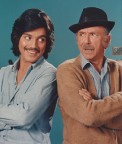 Freddie
Prinze Sr. (b. 1/28/1954, NY, d. 1/29/1977 (self-inflicted gunshot) Freddie
Prinze Sr. (b. 1/28/1954, NY, d. 1/29/1977 (self-inflicted gunshot)
Actor, Comedian The son of a Puerto Rican mother
and a Hungarian father (A Hungarican as Freddie would say), Freddie
Prinze was a 20 year-old stand-up comedian when he earned a spot on
the TV sitcom, Chico and the Man. The show made its debut in
1974, was a ratings success, and by 1977 Prinze was one of the biggest
stars on TV. At the height of his popularity, despondent over personal
problems and apparently under the influence of drugs, he shot himself
in the head and died several hours later.
Extra credit: Prinze is the father of movie star Freddie
Prinze, Jr. Prinze's career, like that of Bill Cosby, took off
after he appeared on Johnny Carson's Tonight Show.
- See Who2.com,
The
Freddie Prinze Sr. "Chico" Homepage, or his filmography
at IMDB
- See pictures of his early childhood and his family at the Freddie
Prinze Photo Gallery l and hear Prinze
Performance Clips
 Freddie
Prinze, Jr. (b. 3/8/1976, Albuquerque, New Mexico, USA) Freddie
Prinze, Jr. (b. 3/8/1976, Albuquerque, New Mexico, USA)
Actor and Heart-Throb! "Young Hollywood's
Leading Man" After
starting out in television, Freddie Prinze, Jr. made his big screen
debut opposite Claire Danes in 1996's To Gillian On Her 37th Birthday.
In 1997 he starred in the horror film I Know What You Did Last
Summer, and its success made Prinze a star. (He also appeared
in the 1998 sequel.) By 2001 he had made more than a dozen movies,
including the hit teen romance She's All That and Head Over
Heels (2001). In April of 2001 Prinze became engaged to actress
Sarah Michelle
Gellar; the two co-star in the 2002 live-action film of the cartoon
Scooby Doo
He enjoys Martial
arts and was listed on On People's 'Best-Dressed' and '50 Most Beautiful
People' lists.
See the very
well-designed I Love Freddie.com
(or directly to their Photo
Gallery), Who2.com
or more at
IMDB
 Jules
White (b. 1900 Budapest, d. 1985) Jules
White (b. 1900 Budapest, d. 1985)
 Four-time
Oscar-Nominated Producer / Director of "The Three Stooges"
and More! Four-time
Oscar-Nominated Producer / Director of "The Three Stooges"
and More! When you think of Columbia Pictures,
think of Jules White. White was born Juliusz Weisz and started out
as a child actor working for Pathe Studios during the 1910s. He came
to America with his family in 1904. Soon after founding Columbia Pictures
in 1924, Harry Cohn hired White to produce comedy short-subjects.
During his 25-year tenure at Columbia Pictures, he became the head
of Columbia's short film division in 1933 and directed 136 Three Stooges
shorts. He also produced or directed many other films with such stars
as Charley Chase, Andy Clyde, Harry Langdon and Buster Keaton.
 White
also created the "Dogville Comedies," a popular series of
short subjects. In these one-reel shorts, trained dogs dressed as
people acted out the plots of popular movies of the day, sometimes
assisted directly by the movie they were spoofing, as in the case
of "The Dogway Melody," which borrowed the soundtrack recording
of "Singin' in the Rain" from The Broadway Melody (1929). White
also created the "Dogville Comedies," a popular series of
short subjects. In these one-reel shorts, trained dogs dressed as
people acted out the plots of popular movies of the day, sometimes
assisted directly by the movie they were spoofing, as in the case
of "The Dogway Melody," which borrowed the soundtrack recording
of "Singin' in the Rain" from The Broadway Melody (1929).
- Oscar Nominated for Hiss and Yell in 1946
- Oscar Nominated for The Jury Goes Round ‘n’
Round in 1945
- Oscar Nominated for Oh, My Nerves (Broadway
Comedies Series) in 1935
- Oscar Nominated Men in Black (The Three
Stooges Series) in 1934
- See his production
credits or
- Purchase videos at Amazon.com
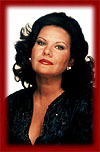 Éva
Márton - (b. 1943, Budapest) Éva
Márton - (b. 1943, Budapest)
Heavenly Soprano Internationally celebrated
as one of opera's greatest singers today. Eva began singing in the
children's choir of the government's radio station, which she eventually
left to begin serious training as a soloist. She entered the Franz
Liszt Academy and finished with a diploma in both opera and vocal
teaching. She made her professional debut as Kate Pinkerton in Madame
Butterfly at the Summer Festival of Margaret
Island, and this, in turn, led to a scholarship at the Hungarian State
Opera. In 1972, after her phenomenal success in Hungary, she was invited
by fellow Hungarian listee Christoph von Dohnanyi to make her debut
as the Countess in Le Nozze di Figaro at the Frankfurt Opera.
Her international fame was now assured. From 1981 to 1986 she was
selected three times among the best artists of the year by the New
York Times. Eva has also become one of the
most recorded artists. She has more than 20 complete operas to her
credit, as well as solo recital programs, aria albums, and symphonic
works.
- Special thanks to EvaMarton.com
for her picture and biographical information (this great site includes
contact information, music clips, and much more).
- Buy her CD's at a Hungary Page recommended site in Hungary: Folio
 Frank
Darabont (b. 1/28/1959, Montbeliard, France) Frank
Darabont (b. 1/28/1959, Montbeliard, France)
Director/Writer - Two Oscar Nominations for The Green Mile, "One
of the best writer/directors of his generation"
Frank Darabont's parents fled Hungary
during the 1956 revolution and settled in a French refugee camp, where
he was born. He came to the US while still an infant and settled in
Chicago.
From IMDB.com: The two-time writer
Academy Award nominee made his debut in the movie industries beginning
first in writing horror movies including The
Blob (1988), Nightmare
On Elm Street 3: Dream Warriors, A (1987), & The
Fly II (1989), and one episode of "Tales
from the Crypt" (1989).
Frank is a close friend of two of the
biggest directors of the movie industries, George Lucas & Steven
Spielberg both of whom he worked for at some time. Frank wrote some
episodes of Lucas's TV-series "Young Indiana Jones Chronicles,
The" (1992). He worked on the Frankenstein (1994) script. His
adaptation of Stephen King's serialized novel The
Green Mile (1999), starring Tom Hanks, was nominated for four
Academy Awards including Best Picture. The death row drama follows
his powerful Shawshank
Redemption. His latest success was "The
Majestic." He is busy on upcoming blockbusters.
- See more on IMDB,
including filmography and photo gallery
- See eOnline!
 Paul
Frederic Simon (b. October 13, 1941 in Newark, New Jersey) Paul
Frederic Simon (b. October 13, 1941 in Newark, New Jersey)
Musician, Singer, Songwriter - American Legend of "Simon &
Garfunkel" fame! 12 Grammys and Rock-n-Roll Hall of Famer.
 Simon
and Garfunkel was the name of the American team of singer/songwriter
Paul Simon and singer Art Garfunkel who recorded between 1964 and
1970. Their shimmering harmonies and acoustic concerts stood in stark
contrast to the rest of the spectacle that marked rock acts of the
'60s. They originally gained attention as a folk act (and some record
stores continue to file their records under 'folk'), but it was Simon's
songs, which frequently dealt with alienation and loneliness that
seemed to strike a chord with an entire generation. By the time of
the split, they were the most successful duo in pop music history. Simon
and Garfunkel was the name of the American team of singer/songwriter
Paul Simon and singer Art Garfunkel who recorded between 1964 and
1970. Their shimmering harmonies and acoustic concerts stood in stark
contrast to the rest of the spectacle that marked rock acts of the
'60s. They originally gained attention as a folk act (and some record
stores continue to file their records under 'folk'), but it was Simon's
songs, which frequently dealt with alienation and loneliness that
seemed to strike a chord with an entire generation. By the time of
the split, they were the most successful duo in pop music history.
Paul's parents were Hungarian Jews, Louis and Belle
Simon. His father was a bass player bandleader who appeared on CBS-TV's
Arthur Godfrey, Jackie Gleason and Gary Moore shows, sometimes under
the name Lee Sims. He later went back to school to earn his master's
degree in teaching, and taught at New York Community College. His
mother was a high school English teacher before her children were
born.
Paul Simon grew up in Queens, New York City, and attended
Forest Hills High School alongside Art Garfunkel. The friends together
sang Paul's first song, "The Girls for Me," when they were
both 15. Billed as Tom and Jerry, the two had their first hit record
at 16: "Hey Schoolgirl," a disarmingly romantic rocker that
got the boys their first gig on "American Bandstand" as
well as their first appearance on the Billboard charts. Tom and Jerry
went their separate ways after high school, but Simon and Garfunkel
soon got together again and American music would never be the same.
- See the Kennedy
Center Honors
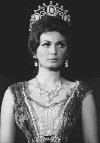 Sylvia
Sass - (b. Near Budapest, 1951) Sylvia
Sass - (b. Near Budapest, 1951)
Another Heavenly Soprano, "the
New Callas" Sylvia Sass
(pronounced shush) was born into a very musical family. Her mother
was a coloratura soprano and her father was a high school music teacher.
At the age of 14, Sass made her stage debut with the school orchestra
in Adam's operetta Nurnberger Puppe. Soon after, she studied
music at Hungary's Liszt Academy, where she completed a five-year
program in just two years. She then began her seven-year stay with
the Hungarian State Opera. This led to her professional debut as Frasquita
in Carmen in 1971. By the age of 25 was already being heralded
as the new Callas, who she met many times. She has been honored with
many awards, her first in 1972 when she won first prize at the Kodály
Voice Competition in Budapest. In 1973, she won the Grand Prix as
Violetta in La Traviata at the International Opera Competition
for Young Singers. In 1974. she won the Silver Medal (there was no
First Prize) at the International Tchaikovsky Competition in Moscow.
She was also made an Honored Artist of Hungary in 1977.
Someone once said to her, "I hear that
you're the new Maria Callas." Sass replied by saying,
"No, I am the first Sylvia Sass."
- See Sylvia
Sass for more details
- Read an interview with great additional details on her life and
career at "The
Great Opera"
- Buy her CD's at a Hungary Page recommended site in Hungary: Folio
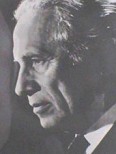 Antal
Doráti - (b. 4/9/1906, Budapest, d. 11/13/1988, Gerzensee,
Switzerland) Antal
Doráti - (b. 4/9/1906, Budapest, d. 11/13/1988, Gerzensee,
Switzerland)
Acclaimed Conductor and Composer Antal
Dorati rose to become the youngest ever conductor of the Royal Opera
House in his native city soon after graduating at age 18. In 1928
he went to Dresden as assistant to Fritz Busch and subsequently was
engaged as conductor at the opera house in Münster / Westfalia, where
he stayed until 1933. From 1934-1941 he was first second conductor,
later music director of the Ballet Russe de Monte Carlo and, subsequently,
of the American Ballet
Theater in New York. His American debut as a symphony conductor
came in 1937, when he guest-conducted the National Symphony in Washington,
D.C. He became an American citizen in 1947. From 1945-1949 Doráti
directed and greatly revitalized the Dallas
Symphony. He became music director of the Minneapolis Symphony
in 1949, where he stayed for 11 years.
In 1963 he was appointed Chief conductor
of the BBC
Orchestra, a post he held for 4 years. This was followed by a
similar position with the Stockholm Philharmonic Orchestra (from 1965-1972).
Parallel to his European activities he became music director of the
National Symphony in Washington in 1970, followed by the same position
1977 in Detroit. At the same time (since 1975) Antal Doráti accepted
the Royal Philharmonic's
invitation to become their chief conductor. From 1981 he became "Conductor
Laureate" for life of 3 orchestras (RPO
London, Stockholm Philharmonic and Detroit
Symphony). He was also a prolific and quite individual composer;
he studied with Kodaly
and Leo Weiner.
- Visit his International
Homepage
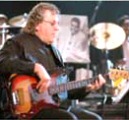 Bob
Babbitt (b. Pittsburgh, PA) Bob
Babbitt (b. Pittsburgh, PA)
Legendary, Two-time Grammy-award winning Electric Bass Player earning
25 Gold and platinum records playing on over 200
top 40 hits. An "Icon of the Groove" helping
to "define the era of the 1960's." Part of the Funk Brothers:
"the Greatest Hit Machine in Modern Music."
Who's playing the music?
 Bob
was part of the legendary "Funk Brothers" who were the primary
studio musicians on almost all of the Motown hits that were recorded
and the ones who defined the music era of the 1960's. The Funk Brothers'
music is famous around the world, though their names are not. The
Funk Brothers put the backbeat - the soul - into the hits of Motown
Records creating music that helped to define the era of the 1960s
and has remained a vital influence to this day,
these musicians played on more #1 records than the Beatles, the Beach
Boys, The Rolling Stones and Elvis Presley combined. Bob
was part of the legendary "Funk Brothers" who were the primary
studio musicians on almost all of the Motown hits that were recorded
and the ones who defined the music era of the 1960's. The Funk Brothers'
music is famous around the world, though their names are not. The
Funk Brothers put the backbeat - the soul - into the hits of Motown
Records creating music that helped to define the era of the 1960s
and has remained a vital influence to this day,
these musicians played on more #1 records than the Beatles, the Beach
Boys, The Rolling Stones and Elvis Presley combined.
Bob was the bass groove behind some of my favorite
tunes including Marvin Gaye's "Mercy, Mercy, Me," Gladys
Knight's "Midnight Train to Georgia," Smokey Robinson's
"Tears of a Clown," Robert Palmer's "Every Kind of
People," and the Spinners' "Rubber Band Man."
 Bob's
long journey didn't start in New York, Detroit, Los Angeles, or any
other city with a rich studio tradition. It began in Pittsburgh, Pennsylvania,
a town renowned more for its steel-making than its hit-making. Born
Robert Kreiner to Hungarian parents, Bob received classical training
on upright bass, although he says the gypsy music to which his family
exposed him at a young age was far more influential. At 15, inspired
by early rhythm & blues, he began performing in local nightclubs.
Bob recalls his early days: "My parents sang with the Gypsies.
They were Hungarian, and they got me a job with a Gypsy band. I think
I made $15.00. It was in the late ’50s." Bob's
long journey didn't start in New York, Detroit, Los Angeles, or any
other city with a rich studio tradition. It began in Pittsburgh, Pennsylvania,
a town renowned more for its steel-making than its hit-making. Born
Robert Kreiner to Hungarian parents, Bob received classical training
on upright bass, although he says the gypsy music to which his family
exposed him at a young age was far more influential. At 15, inspired
by early rhythm & blues, he began performing in local nightclubs.
Bob recalls his early days: "My parents sang with the Gypsies.
They were Hungarian, and they got me a job with a Gypsy band. I think
I made $15.00. It was in the late ’50s."
Bob studied at the Detroit Institute Of Arts, majoring
in Harmony & Theory for Bass.
- Bob appeared as himself in the critically acclaimed
documentary "Standing
in the Shadows of Motown." Watch the movie trailer and see
him play! The film won Best Documentary at the National Society of
Film Critics in 2002. It also won the New York Film Critics Circle
in 2002.
- See his Official Site: bobbabbitt.com
- Listen to the Funk Brothers show on Boston's Public Radio at
the
Connection.org
 Ferenc
Molnár - (1/12/1878, Budapest - 4/2/1952, New York) Ferenc
Molnár - (1/12/1878, Budapest - 4/2/1952, New York)
Playwright Ferenc Molnar studied
criminal law in Budapest and Geneva and became a journalist for the
Budapest newspaper Budapesti Napló as the full-time Paris correspondent.
In 1901, after writing a number of short stories, he published his
first book, The Hungry City, a story of dirty politics, corruption,
social inequality and anti-semitism and became the the darling of
Budapest café society. Molnár was the ringleader of a circle of artists
and musicians in Budapest. They were called "The Elastics,"
because they wore a new kind of laceless shoe with elastic on the
side. The group comprised of young playwrights, writers of farce and
light comedy, as well as some musicians, operetta composers and conductors
from operetta and musical theatres. A friend commissioned him to write
a play for the National Theatre, a farce. Although this play, The
Lawyer, was never performed at the National Theatre, it played
in 1902 at the new Comedy Theatre and audiences demanded more from
Molnár. But he wanted to write something more serious, so he wrote
The Devil, which was very modern, slightly Freudian and very
titillating (in fact, it was banned in London) and brought him international
acclaim. His most famous work, Liliom, was translated to English
and performed in 1926 in London with Charles Laughton. He moved
to New York in 1939, one of the many talented immigrants that were
part of the "Hungarian Invasion" of New York Theatre, and
Liliom was revived to rave reviews. Liliom provided
the plot for Rodgers' and Hammerstein's famed musical, "Carousel"
which debuted in 1945. Some of his plays were adapted for the Big
Screen, including The
Swan, starring Grace Kelly, Charles Vidor, Alec Guiness, and Louis
Jourdan.
- Read more at The
Play's the Thing
- Buy other movies based on Ferenc Molnar's works at Barnes
and Noble
 Jeffrey
Tambor (b. 7/8/1944, San Franciso, CA) Jeffrey
Tambor (b. 7/8/1944, San Franciso, CA)
Actor Large-framed and prematurely bald,
American actor Jeffrey Tambor excelled in character parts from the
time he was draft age. Tambor spent nearly two decades in regional
theatre, appearing in the classic comedy roles (his favorite was Aguecheek
from Twelfth Night: "One hundred lines, one hundred laughs").
While his propensity for scene-stealing did not always endear him
to his fellow actors, Tambor was able to matriculate to films and
television by the end of the '70s. He was occasionally seen on the
early-'80s police drama Hill Street Blues as cross-dressing
attorney (and later judge) Alan Wachtel. He was in his mid-thirties
when he made his film debut in the Al Pacino courtroom vehicle, …And
Jutice for All (1979). His film roles usually consisted of corporate
blowhards and backstabbing CEOS (e.g. 1983's Mister Mom). In
1986, Tambor starred in the situation comedy Mister Sunshine,
playing a blind English professor (the series' gratuitous slapstick,
which Tambor invariably performed brilliantly, incurred the wrath
of several professional advocates for the sightless). Some of Tambor's
more notable subsequent films include City Slickers (1991),
Life Stinks (1991) (as Mel Brooks's villainous rival), Dr.
Dolittle (1998), and Dr. Seuss' How The Grinch Stole Christmas
(2000) and Pollock (2000). More recently, Jeffrey Tambor
has been seen as the Uriah Heep-ish sidekick of scabrous talk show
host Garry Shandling in cable TV's The Larry Sanders Show.
A quote: "I come from a Hungarian
Russian background," he says while perusing the menu for something
low-fat. "Their way of
showing love was food and the amount of food. The motto of our family
was 'Did you eat? What did you eat? When are you going to eat?'
It's that European culture. My lunches in school were enormous--mine
were in shopping bags!"
- See this article from the LA
Times or
- See his filmography and more photos on Yahoo
Movies or
IMDB
 Drew Barrymore - (b. 2/22/1975, Culver
City, California) Drew Barrymore - (b. 2/22/1975, Culver
City, California)
Actress, Model, Producer, Philanthropist, America's
Sweetheart
Her mother is actress and "wild child"
Ildiko
Jaid Mako. While waitressing at the Troubadour, a music club on
Santa Monica Blvd., Ildiko met John Barrymore Jr. They dated for 5
years (from 1970-1975) when they gave birth to their child, Drew Blythe
Barrymore. John was abusive and Jaid left him before Drew was born.
Normalcy for Drew would be hard to come by...
This international superstar of the legendary Barrymore
family appeared in her first TV commercial for Puppy Choice dog food
before her first birthday. At the ripe old age of 11 months she made
her first TV appearance when she appeared in a dog food commercial.
At the age of two she made her first TV movie, playing a boy in Suddenly,
Love. Her first feature film happened at age five when the young
Barrymore apeared in Altered States. Two years later Drew landed
her most famous role playing Gertie in the hugely popular E.T.
The Extra-Terrestrial. Appearing in one of the top films of all
time helps to put an actress on the map. In 1984, Drew appeared in
Firestarter and earned a Golden Globe nomination for her role
in Irreconcilable Differences. That's when things started to
go bad for Drew. At age 9, she was drunk at a party thrown for Rob
Lowe. At age 10, she was smoking pot and by her thirteenth year she
had escalated to cocaine. At an age when most teens are getting ready
for high school, Drew was checking in to rehab.
Drew felt she had finally beaten her demons and that
same year she also legally declared herself free of her mother's control;
the two had shared a rocky relationship for years. Clean and sixteen,
Drew co-authored a book, Little Girl Lost, that chronicled
her life so far. Drew now started working on getting her career back
on track. In 1992, she turned in an incredible performance in the
steamy thriller Poison Ivy. In October 1993, it was Drew Barrymore
that surprised the world as the new "GUESS
Girl." In 1995 she appeared in movies like Mad Love,
Batman Forever, and Boys on the Side. In 1996 she appeared
in the teen horror parody Scream and worked opposite Edward
Norton in Woody Allen's Everyone Says I Love You. She teamed
up with Adam Sandler in 1998 to appear in the wildly popular hit The
Wedding Singer and ended the year with a strong performance in
Ever After. The now hard-working actress turned her hand to
producing as well. In 1999 she produced and starred in both Never
Been Kissed and in 2000 Charlie's Angels which co-starred
Cameron Diaz
and Lucy Liu. In 2001 she produced Donnie Darko and starred
in Riding in Cars with Boys. Flower Films is her sown production
company, .
Trivia:
- Godmother to Courtney
Love's daughter Frances Bean
- Steven
Spielberg is her godfather
- Anna
Strasberg is her godmother.
- (1997) Chosen by "People" magazine as
one of the 50 Most Beautiful People in the World
- Was the youngest person to ever host Saturday Night
Live at seven years old
- See filmography, details, pictures and more at IMDB
- Buy videos, access more Drew-related sites at Star
Pulse
 Jerry
Seinfeld (b. 4/29/1954, Brooklyn, NY) Jerry
Seinfeld (b. 4/29/1954, Brooklyn, NY)
Actor / Comedian: American Icon!
The most successful and influential comedian of his generation!
Critically acclaimed and successful as a stand-up
comic, television actor, best-selling author and advertising pitchman,
Jerry was born to Hungarian Kalman Seinfeld, a signmaker, and his
wife, Betty. Jerry was the second of the couple's two children. The
Seinfeld family moved to Long Island when Jerry was a child, and he
spent most of his youth there. After graduating from high school,
Seinfeld went on to college, first attending the State University
of New York at Oswego, and then moving on to Queens College of the
City University of New York, where he received a Bachelor's Degree
in 1976. Seinfeld developed a keen interest in performing while in
college (his degree from Queens was in communications and theater),
and after graduation he began working New York comedy clubs, often
without pay, while holding down a number of odd jobs.
Seinfeld's first big break came when his bright but
understated observational humor caught the eye of standup legend Rodney
Dangerfield, who featured Seinfeld on a special for HBO. The
exposure helped establish Seinfeld on the comedy club circuit, and
won him a recurring role on the situation comedy Benson. In
1981, Seinfeld appeared for the first time on The Tonight Show,
then hosted by Johnny Carson, and made a strong impression on both
the audience and the host; he became a frequent guest on the Carson
show, as well as David Letterman's late-night talk show. As Seinfeld's
fame began to rise, he starred in several cable TV specials, and was
approached to star in several TV series. Seinfeld and his good friend
Larry David began working up an idea for a situation comedy to be
called The Seinfeld Chronicles. In 1989, NBC took the bait, and a
year later the show premiered under the streamlined name Seinfeld.
Concerning standup comic Jerry Seinfeld and the often odd everyday
occurrences of his circle of friends (many of whom were based on people
Seinfeld and David knew in real life), Seinfeld got off to a slow
start, but began to win a healthy audience in its second season, and
in time became one of NBC's biggest hits.
- See his filmography and more photos on Yahoo
Movies or
IMDB
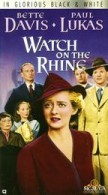 Paul
Lukas (b. Pál Lukács 5/26/1824, Budapest, d. 8/15/1971, Tangier,
Morocco) - Paul
Lukas (b. Pál Lukács 5/26/1824, Budapest, d. 8/15/1971, Tangier,
Morocco) -
Actor, Oscar
Winner for "Watch on the Rhine"
Lukas trained for the stage at the Hungarian Actors
Academy, and in 1916 he went to Kassa (now Kosice after Czech annexation)
to become an actor, In 1918 he entered into engagement with the Theatre
for Comedy and later debuted on the Budapest stage in Ferenc Molnár's
"Liliom." He soon became Star of the Hungarian Stage and
appeared in a number of Max Reinhardt productions before arriving
in the US in 1927 and establishing himself as one of Hollywood's favorite
suave European types. For a time in the early 1930s, the dapper Lukas
was a romantic lead of films including "Strictly Dishonorable"
(1931), "Little Women" (1933), "By Candlelight"
(1933), and "The Fountain" (1934).
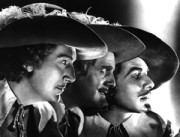 He did, however, have more than a touch of the roue about him, which
manifested itself in "Affairs of a Gentleman" (1934), "The
Three Musketeers" (1935) and in his splendid supporting performance
as one of the heroine's illicit romances in William Wyler's "Dodsworth"
(1936). Alfred Hitchcock's delightful thriller "The Lady Vanishes"
(1938) found Lukas playing an outright, though still sneaky, villain,
and he played a number of unsympathetic roles in wartime films, memorably
as Hedy Lamarr's dangerous husband in "Experiment Perilous"
(1944).
He did, however, have more than a touch of the roue about him, which
manifested itself in "Affairs of a Gentleman" (1934), "The
Three Musketeers" (1935) and in his splendid supporting performance
as one of the heroine's illicit romances in William Wyler's "Dodsworth"
(1936). Alfred Hitchcock's delightful thriller "The Lady Vanishes"
(1938) found Lukas playing an outright, though still sneaky, villain,
and he played a number of unsympathetic roles in wartime films, memorably
as Hedy Lamarr's dangerous husband in "Experiment Perilous"
(1944).
The most notably exception to Lukas's roles during
this period was his fine Oscar-winning lead performance (recreating
his stage role) as a heroic resistance fighter in the well-intentioned
but stodgy "Watch on the Rhine" (1943). During his later
years Lukas played a number of gentler roles, keeping busy in "Twenty
Thousand Leagues Under the Sea" (1954, as Prof. Aronnax) and
"Tender Is the Night" (1962), but the gentlemanly if sometimes
deceptive Continental suavity which was always his trademark never
left him.
- Buy Paul Lukas movies at Barnes
and Noble
- See his filmography at IMDB
 Johnny
Weissmuller (b. 6/2/1904, Szabadfalu (Freisdorf), Hungary, [awarded
to Rumania after WWI], d. 1/20/1984, Acapulco, Mexico) Johnny
Weissmuller (b. 6/2/1904, Szabadfalu (Freisdorf), Hungary, [awarded
to Rumania after WWI], d. 1/20/1984, Acapulco, Mexico)
The one and only Tarzan and
FIVE-time Gold Olympic swimming legend! "The greatest swimmer of
all time" Johnny was born Janos Weiszmueller
in Szabadfulu (Freetown or in German, Freidorf), near Temesvar [now
Timisoara after Rumanian annexation] in the Banat region of Hungary
where many "Schwabians" / "Donauschwaben" / "Danube
Swabians" or ethnic Germans had settled after the pullout of
the Ottoman Turks in the 17th century. His parents were Peter Weiszmueller,
a day worker from Varjas, and Erzsebet Kersch, of Szabadfalu (the
name for Freidorf at the time). His Godparents were Janos Borstner
and Katharina Erbesz. The Weissmuller family arrived in New York on
the S.S. Rotterdam on Jan 26, 1905 when Johnny was three.
Johnny often claimed he was born in Windber, PA because
of Olympic eligibility issues. Weissmuller was the winner of the 100m
freestyle in 1924 and 1928 and a member of the winning 4x200m relay
team in both years. He also won a bronze medal in the 1924 water polo
competition at the Olympics. He broke three records at the 1924 Olympics
in Paris. Weissmuller set 28 world records and such was his margin
of superiority over his contemporaries that many authorities still
rate him ahead of Mark Spitz as the greatest swimmer of all time.
Because of the limited number of events available to Weissmuller,
his Olympic record cannot be fairly compared with that of Spitz but
the longevity of his records is a testament to his greatness. His
1927 world record for the 100 yard freestyle was unbeaten for 17 years,
a remarkable length of time during a period of rapid development in
the sport. From 1921-29 he won every free style race he entered. In
addition to his Olympic Triumph, he won 18 Gold Medals at the USA
National Championships (1921 - 1923,1925 -1928). Much of his success
was due to his revolutionary high-riding stroke, flutter kick and
head-turning breathing.
After modeling BVD's and successfully playing a fig-leafed
Adonis, MGM took notice and invited for a screen test for the role
of Tarzan. Weissmuller was chosen over 150 other applicants and went
on to become the most famous screen Tarzan of all, playing the role
in 12 movies between 1932 and 1948. After 1942 MGM had used up its
options; it dropped Tarzan and Weissmuller who then moved to RKO and
made six more Tarzans. After that he made sixteen programmed Jungle
Jim (1948) movies for Columbia, finally retiring from movies to
private businesses in Fort Lauderdale FL. Weissmuller died in Acapulco,
Mexico after a series of strokes.
Trivia:
- Had three children with Beryl: Johnny Scott Weissmuller,
Jr.; Heidi Elizabeth Weissmuller; and Wendy Anne Weissmuller.
- Weissmuller had a close call in Cuba during the
time of the Cuban Revolution. While playing golf, he and his friends
found themselves suddenly surrounded by a group of Castro's soldiers
intent on kidnapping them or worse. Thinking fast, Weissmuller immediately
gave his trademark Tarzan yell. The soldiers immediately recognized
it and were so delighted to meet Tarzan that they escorted the group
back to a safe area.
- When Weissmuller was introduced to the first
Cheetah in his Tarzan films in 1931 (he worked with 8 chimpanzees
altogether), the chimp's trainer told him to show no fear or the
animal would attack him. As Weissmuller, dressed in his Tarzan loincloth
and hunting knife, walked up to the animal, it bared its teeth,
growled at him and lunged as if to attack him. Weissmuller took
the knife out of the sheath and held it in front of the chimp's
nose, to make sure he saw and smelled it. He then slammed the animal
on the side of the head with the knife handle. He put the knife
back in its sheath and held out his hand to the chimp. It glared
at him, bared his teeth again, then changed its mind, grinned at
Weissmuller and jumped up and hugged him. Weissmuller never had
any further problems with the chimp--although other cast and crew
members did--and it followed him around like a puppy dog during
all the pictures they worked together.
- See the International
Olympic Committee
- For extensive photos and filmography see IMDB
- See my Sports page
 András
Schiff - (b. 12/21/1953, Budapest) András
Schiff - (b. 12/21/1953, Budapest)
Acclaimed Classical Pianist Andras Schiff
occupies a prominent position among the world's leading musicians.
Born in Budapest, Hungary in 1953, he began piano lessons at age five
with Elisabeth Vadász and continued his musical studies at the Ferenc
Liszt Academy with Professor Pál Kadosa, György Kurtág and Ferenc
Rados. He also worked with George Malcolm in London. Among other honors,
András Schiff was awarded the Bartók Prize in 1991 and the "Claudio
Arrau Memorial Medal" from the Robert Schumann Society in Dusseldorf
in 1994. In March 1996, Mr. Schiff received the highest Hungarian
distinction, the "Kossuth Prize" and in May 1997, he received
the "Leonie Sonnings Music Prize" in Copenhagen. He makes
his home in Florence, Italy.
- Read more
- See his impressive Discography at his agency, Kirshbaum
Demler & Associates
- Buy his CD's at Barnes
& Noble
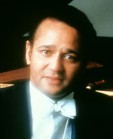 Andre
Watts - (b. 6/20/1946, Nürnberg, Germany) Andre
Watts - (b. 6/20/1946, Nürnberg, Germany)
Acclaimed Classical Pianist - one of the "Great
Pianists of the 20th Century" The
first African-American concert pianist to achieve international superstardom.
Critics have called Watts electrifying, sensational, daring,
colorful, imaginative, powerful, and a supervirtuoso. André
Watts is the son of an American career soldier stationed in Germany
and a Hungarian refugee. Watts began studying the violin at age four.
By the time he was six he made it known that his preference was for
the piano, so his mother, a pianist herself, gave him his first lessons.
As is frequently the case, he loved to play but hated to practice.
When his habit persisted, his mother began relaying stories of her
countryman, pianist and composer Franz Liszt, emphasizing the fact
that he practiced faithfully. Liszt soon became Watts's hero, and
he even adopted Liszt's bravura playing style.
At 10 he performed a Haydn concerto with the Philadelphia
Orchestra. He burst upon the music world at the age of 16, when Leonard
Bernstein chose him to make his debut with the New York Philharmonic
in their Young People’s Concerts, broadcast nationwide on CBS-TV.
He became an overnight sensation. More than 30 years later, André
Watts remains one of today’s most celebrated and beloved superstars.
His performances each year with the world’s great orchestras and conductors
and his sold-out recitals and appearances at the most prestigious
international festivals bring him to every corner of the globe. A
much-honored artist who has played before royalty in Europe and heads
of government in nations all over the world, André Watts was selected
to receive the Avery Fisher Prize in 1988. At age 26, he was the youngest
person ever to receive an Honorary Doctorate from Yale University.
- Read more at Cramer/Marder
Artists Agency or
- www.africanpubs.com
 Béla
Bartók - (3/25/1881, Nagyszentmiklós, Hungary,
d. 9/26/1945, New York) Béla
Bartók - (3/25/1881, Nagyszentmiklós, Hungary,
d. 9/26/1945, New York)
Composer, ethnomusicologist Bela Bartok
was one of the most significant musicians of the twentieth century.
He shared with his friend Zoltán Kodály, another leading Hungarian
composer, a passion for ethnomusicology. His music was invigorated
by the themes, modes, and rhythmic patterns of the Hungarian and other
folk music traditions he studied, which he synthesized with influences
from his contemporaries into his own distinctive style. Bartók grew
up in that part of Hungary annexed by Rumania at the Treaty of Trianon
after World War I. His birthplace, Nagyszentmiklós (Great St
Nicholas), in Transylvania, became Sînnicolau Mare, Romania.
In 1894, Pozsony (now called Bratislava after Slovakia
was created out of Northern Hungary) the former Hungarian Capital,
became their new home. He attended school, studied the piano with
Laszlo Erkel and Anton Hyrtl, and composed sonatas and quartets.
In 1898 he was accepted by the Vienna Conservatory, but decided rather
to attend the Budapest Academy, where he studied the piano as a pupil
of Franz
Liszt as well as studying composition. He deepened his acquaintance
with Richard
Wagner during these times, though it was the music of Richard
Strauss, who he met at the Budapest premiere, that had most influence.
He wrote a symphonic poem, Kossuth, using Strauss's methods combined
with Hungarian elements in Liszt's manner.
Trivia: Béla showed precocious
musical ability and began to compose dances at the age of nine.
- See Thinkquest
- See much more at the Unitarian
Church's Bartok site
- See Matt
Boynick's site for more on Bartok including a picture gallery.
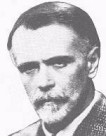 Zoltan
Kodály (b. 12/16/1882 Kecskemét, Hungary, d. 3/6/1967, Budapest) Zoltan
Kodály (b. 12/16/1882 Kecskemét, Hungary, d. 3/6/1967, Budapest)
Composer, educator, ethnomusicologist, linguist, author and philosopher.
Along with Bartók and
Ligeti, Zoltan Kodaly is one of the three major figures in Hungarian
music this century. Kodály's many compositions show a strong affinity
with the folk traditions of his country and include ballad operas,
orchestral works, chamber music, choral works, songs, folk song arrangements
and music for children.
Kodály was born in Kecskemét,
a small town in central Hungary. Much of his childhood was spent in
the Hungarian villages. It was here that Kodály developed a great
love for the Hungarian countryside and for the folk traditions of
his culture.From a young age Kodály showed great aptitude and interest
in music. His father, an amateur musician, encouraged this interest,
particularly the young boy's interest in composition. By the time
Kodály reached secondary school he was composing his own music. After
completing his school education, Kodály studied at The Franz List
Academy (Hungary's most prestigious music institution) where he
met Bela Bartok with whom they collected Magyar folk music, elements
of which they would eventually use in their compositions. He later
attended the University of Hungary where he earned a degree
in Hungarian, German and then, later, a Doctor of Philosophy in linguistics.
As a composer, Kodály did much to bridge the gap between Hungarian
folk music and the European art music tradition. In later years Kodály
was president of the Hungarian Academy of Sciences, president of The
International Folk Music Council, and honorary president of the International
Society for Music Education.
Trivia: His hand
signals teaching method was seen in the movie Close Encounters
of the Third Kind
- Read more at Emory
University
- See this Photo
Gallery
 Edward
James Olmos (b. 2/24/1947, East Lost Angeles, California, USA) Edward
James Olmos (b. 2/24/1947, East Lost Angeles, California, USA)
Oscar and Tony Nominated and Emmy Award Winning Actor, Producer,
Director, and Activist. The "Olivier
of the Latino World" and People's 2000 Sexiest Man Alive
"I come from a dysfunctional family,
I'm a minority, I have no natural talent, but I did it.
If I can do it, anybody can do it. I take away all the excuses."
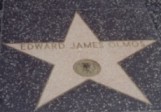 Olmos's
passion for education is a gift from his parents. He was born to Pedro
Olmos and Eleanor Huizar. His father had left Mexico City, Mexico,
at the age of twenty-one and settled in Los Angeles. Olmos claims
to be Chicano-American first, Asian second, and European third. Olmos
is a Hungarian name and his ancestry includes Moranos or Transversos,
Jews who converted to Catholicism during the Spanish Inquisition to
avoid religious persecution and torture. He also includes African
ancestry. It is this global heritage 'that made me brown," he
says with pride. Olmos's
passion for education is a gift from his parents. He was born to Pedro
Olmos and Eleanor Huizar. His father had left Mexico City, Mexico,
at the age of twenty-one and settled in Los Angeles. Olmos claims
to be Chicano-American first, Asian second, and European third. Olmos
is a Hungarian name and his ancestry includes Moranos or Transversos,
Jews who converted to Catholicism during the Spanish Inquisition to
avoid religious persecution and torture. He also includes African
ancestry. It is this global heritage 'that made me brown," he
says with pride.
Olmos spent nine years trying to establish himself
as an actor, making his film debut (billing himself as Eddie Olmos)
as an extra in Aloha, Bobby and Rose in 1975. Prior to that, Olmos
had worked as a bit player and extra in several early '70s television
shows ranging from Medical Center to Hawaii Five-O.
In 1979, he made a splash on Broadway playing Pachuco in Luis Valdez's
Zoot
Suit. The play was originally staged in L.A. and represented the
first time in which Olmos was paid to act on-stage. During the show's
New York run, Olmos earned a Tony Nomination and a Drama Critics Circle
Award. In 1982, he played a creepy police detective in Blade
Runner. Olmos became a star when he played the super-pragmatic
Lieutenant Castillo on the hip police drama Miami
Vice (1984-1989) and in 1985 won an Emmy for his efforts. He earned
an Oscar nomination for his inspirational performance as a determined
teacher who helps a troubled group of urban kids excel in math and
science in Stand
and Deliver (1986). He made his 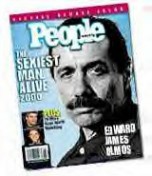 feature
film directorial bow in 1992 with the powerful American
Me, a grim look at a reformed gangster's attempts to stay away
from the violent, criminal ways of his old cohorts. Other notable
1990s efforts include Gregory Navahos' beautiful My
Family/Mi Familia (1995). Other credits include Selena
with Jennifer Lopez and the voice of the Chief in The Road to El Dorado. feature
film directorial bow in 1992 with the powerful American
Me, a grim look at a reformed gangster's attempts to stay away
from the violent, criminal ways of his old cohorts. Other notable
1990s efforts include Gregory Navahos' beautiful My
Family/Mi Familia (1995). Other credits include Selena
with Jennifer Lopez and the voice of the Chief in The Road to El Dorado.
Olmos' humanitarian activities include acting as a
United States Goodwill Ambassador for UNICEF, being the national spokesman
for the Juvenile Diabetes Foundation, serving a place on the boards
of the Miami and Los Angeles Children's Hospitals, serving as the
executive director of the Hazard Education Project, and contributing
to the foundation for the Advancement of Silence and Education. For
his many good works, Olmos has received Honorary Doctorates from five
educational institutions including the University of Colorado, California
State University at Fresno, and the American Film Institute in Hollywood.
- Visit the Edward
James Olmos Page
- See his Martin Luther King Jr. Day keynote
address at the University of Michigan
- See Celebrating
Hispanic Heritage - Biography
- Buy his videos at Barnes
and Noble.com
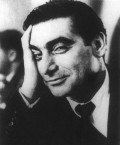 Robert
Capa - Robert
Capa -
Acclaimed Photojournalist (b. Endre Erno Friedmann, Budapest,
1913, d. May 25, 1954 (Thai Binh, Vietnam). "One
of the greatest photojournalists of the 20th century"
- Brittanica "The Greatest
War Photographer in the World: Robert Capa"- Picture
Post 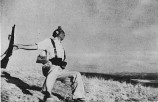 Capa
left Hungary as a boy, lived in Paris in 1930's and covered many wars:
Spanish Civil war, China, WW II (north Africa, Italy, D-Day, Liberation
of Paris, Israeli War of Independence (1948), and the French Indo-China
war. He was killed after stepping on a landmine. Capa
left Hungary as a boy, lived in Paris in 1930's and covered many wars:
Spanish Civil war, China, WW II (north Africa, Italy, D-Day, Liberation
of Paris, Israeli War of Independence (1948), and the French Indo-China
war. He was killed after stepping on a landmine.
His most famous photo is of the "Falling Soldier,
" from the Spanish Civil War in 1936 published in Life
magazine in 1937. He was one of the co-founders of the Magnum photo
agency. His brother, Cornell Capa, is current director of the International
Photography Centre in New York.
Trivia: Famous love affair with Ingrid Bergman
-1945
Pierce Brosnan will soon portray Robert Capa in "Blood
and Champagne"
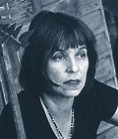 Éva
Gárdos Éva
Gárdos
Acclaimed Screenwriter, Director, and Editor Eva
Gardos grew up in rural communist Hungary in the 1950s, away from
film and television. She began her film career as an editor on 1983’s
Valley Girl and later worked on films such as Mask,
Barfly, Valleygirl, Tales from the Crypt, and Time
of the Butterflies. An
American Rhapsody marked Eva’s debut as both a screenwriter
and director. Her screenplay, a semi-biographical tale depicting
the personal odyssey of a family's escape from Communist Hungary on
which she worked for seven years, won the prestigious Hartley-Merrill
International Screenwriting Prize. The award led production company
Seven Arts International (now Fireworks Pictures) to greenlight her
as director. An American Rhapsody won both the Audience Award
for Best Feature, and the Perrier Bubbling Under Award for promising
first-time directors at the 2001 Nantucket Film Festival.
Buy her videos at Barnes
& Noble
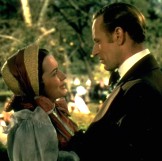 Leslie
Howard - (b. 4/3/1893, London, d. 6/1/1943, Bay of Biscay ,casualty
of war) Leslie
Howard - (b. 4/3/1893, London, d. 6/1/1943, Bay of Biscay ,casualty
of war)
Actor (born Lászlo Steiner). See on the left in 'Gone With
the Wind." He was born to Hungarian parents,
Lilian and Frank Steiner, in London. Frank worked as a stockbroker.
Leslie's younger years were spent in Vienna. After school, Leslie
worked as a bank clerk until the outbreak of World War I. In 1917,
diagnosed as shell shocked, he was mustered out and advised to take
up acting as therapy. In a few years, his name was known on the stages
of London and New York. He became known as the perfect Englishman,
slim, tall, intellectual and sensitive, a part that he would play
in many movies and a part women would dream about.
He made his first movie in 1930, 'Outward Bound',
a film adaptation of his stage performance of the same name. In 'Never
the Twain Shall Meet (1931)' and 'Smilin Through (1932)',
he was playing the Englishman role to the hilt. His screen persona
could perhaps be best summed up by his role as Sir Percy Blakeney
in 'The Scarlet Pimpernel (1934)', a foppish member of society.
It was Leslie who insisted that Humphrey Bogart get the role of Duke
Mantee, in 'The Petrified Forest (1936), the character that
Bogart played in the stage production.
With success, he became quite picky about which roles
he would do and usually did but two films per year. In 1939, he would
play the character that would always be associated with him - that
of Ashley Wilkes, the honor bound disillusioned intellectual southern
gentleman in 'Gone with the Wind'. But war clouds were gathering
over England and Leslie devoted all his energy on behalf of the war
effort. He directed films, wrote articles and made radio broadcasts.
Howard returned to his native England after World War 2 began, and
was shot down by Nazi fighter planes while flying from Portugal in
1943.
Trivia:
- His son is actor Ronald Howard, who played
Sherlock Holmes on television.
- The oldest of 5 children, Leslie's youngest brother,
Arthur Howard
(1910-1995), was also an actor.
- His sister, Irene, also worked in the studios
in Hollywood.
- A nephew of Leslie's, Alan Howard, below,
is an acclaimed stage actor in Britain, who was awarded the C.B.E.
in 1997.
See above and much more at the
IMDB
 Goldie Jean Hawn (born November 21, 1945) is an
American actress, film director and producer, whose
career has spanned more than four decades.
Goldie Jean Hawn (born November 21, 1945) is an
American actress, film director and producer, whose
career has spanned more than four decades.
Hawn is perhaps best known for her roles in Private Benjamin,
Foul Play, Wildcats, Overboard, Bird on a Wire, Death
Becomes Her, The First Wives Club, and The Banger Sisters.
She won the Academy Award for Best Supporting Actress for her
performance in the 1969 film Cactus Flower.
She is also the mother of actors Oliver Hudson
and Kate Hudson.
Hawn has maintained a relationship with her long-time
boyfriend, actor Kurt Russell since 1983.
Early life
Hawn was born in Washington, D.C., the daughter of Laura
(née Steinhoff), a jewelry shop/dance school owner,
and Edward Rutledge Hawn, a band musician who played at
major events in Washington. She was named after her mother's
aunt. She has a sister, Patricia; a brother, Edward, who
died before she was born. Through her father, Hawn is a
direct descendant of Edward Rutledge, a signatory of the
Declaration of Independence. Hawn was raised in Takoma Park,
Maryland. Her father was Presbyterian and her mother was
Jewish, the daughter of immigrants from Hungary; Hawn
was raised in Judaism.
Hawn began taking ballet and tap dance lessons at the
age of three, and danced in the chorus of the Ballet Russe
de Monte Carlo production of The Nutcracker
in 1955. She made her stage debut in 1961, playing Juliet
in a Virginia Shakespeare Festival production of Romeo and
Juliet. By 1964, she ran and taught
in a ballet school, having dropped out of American University,
where she was majoring in drama. In 1964, Hawn, who graduated
from Montgomery Blair High
School (class of 1963), made her professional dancing debut
in a production of Can-Can at the Texas Pavilion of the New York
World's Fair. She began working
as a professional dancer a year later, and appeared as a
go-go dancer in New York City.
Career
1960s
Hawn began her acting career as a cast member of the
short-lived situation comedy Good Morning, World
during the 1967-1968 television season, her role
being that of the girlfriend of a radio disc jockey,
with a stereotypical "dumb blonde" personality.
Her next role, which brought her to international
attention, was as one of the regular cast members on the
1960s sketch comedy show, Rowan & Martin's Laugh-In.
On the show, she would often break out
into high-pitched giggles in the middle of a joke, and
deliver a polished performance a moment after. Noted
equally for her chipper attitude as for her
bikini and painted body, Hawn personified something of a
1960s "It" girl. Hawn's Laugh-In persona was
parlayed into three popular film appearances
in the late 1960s and early 1970s: Cactus Flower, There's
a Girl in My Soup and Butterflies Are Free. Hawn had made her
feature film debut in a bit role
as a giggling dancer in the 1968 film The One and Only,
Genuine, Original Family Band, in which she was billed
as "Goldie Jeanne", but in her
first major film role, in Cactus Flower (1969), she won
an Academy Award for Best Supporting Actress as Walter
Matthau's suicidal fiancee.
1970s
After Hawn's Academy Award win, her film career took off.
She starred in a string of above average and successful
comedies starting with There's a Girl
in My Soup (1970), $ (1971) and Butterflies Are Free (1972),
as well as proving herself in the dramatic league with the
satirical dramas The Girl from
Petrovka, The Sugarland Express both in 1974 and Shampoo (1975).
She also hosted two television specials: Pure Goldie in 1971
and The Goldie Hawn Special
in 1978. The latter was a sort of comeback for Hawn, who had
been out of the spotlight for two years since the 1976 release
of The Duchess and the Dirtwater
Fox, while she was focusing on her marriage and the birth of
her son. On the special she performed show tunes and comedy
bits alongside comic legend George
Burns, teen matinee idol Shaun Cassidy, popular television
star John Ritter (during his days on Three's Company) and even
the Harlem Globetrotters joined
her for a montage. The special later went on to be nominated
for a prime-time Emmy. This came four months before the feature
film release of Foul Play
(with Chevy Chase), which became a box office smash and revived
Hawn's career in the film industry. The plot centered around an
innocent woman in San Francisco
who becomes mixed up in a murder plot. Hawn's next film, Mario
Monicelli's Lovers and Liars (1979), was a box office bomb.
In 1972 Hawn recorded and released
a solo country LP for Warner Brothers, titled Goldie.
It was recorded with the help of Dolly Parton and Buck Owens.
All music gives the album a favorable
review, calling it a "sweetly endearing country-tinged
middle of the road pop record".
1980s
Hawn's popularity continued into the 1980s,
starting off with another primetime variety special alongside
actress and singer Liza Minnelli - Goldie and Liza Together
(1980) - which went on to be
nominated for four prime time Emmy's. Hawn furthermore
established both her critical and commercial worth in Private
Benjamin (1980), a comedy which not
only starred Hawn but was also her foray into producing.
Private Benjamin, which also starred Eileen Brennan and
Armand Assante, garnered Hawn her second
Academy Award, this time for Best Actress. Hawn's box office
success continued with an assortment of pictures, including
comedies like Seems Like Old
Times (1980), Protocol (1984) and Wildcats (1986) (Hawn
also served as executive producer on the latter two) and
dramas like Best Friends (1982) and Swing
Shift (1984).
At the age of thirty-nine, Hawn posed for
the cover of Playboy's January 1985 issue, which went on
to be one of their highest selling issues.
Hawn posed in a giant martini glass wearing nothing but a
white collar shirt, a loosened black tie, and a pair of red
stilettos. The headline read: "A
SPARKLING PLAYBOY INTERVIEW WITH GOLDIE HAWN". Her last
film of the 1980s was opposite partner Kurt Russell (for the
third time) in the 1987 comedy
Overboard, a critical and box office disappointment which
questioned the likability and bankability of the two paired
together onscreen.
1990s
Hawn's career slowed down after 1987, but was revived somewhat
in 1990 with the action comedy Bird on a Wire, a critically
panned but commercially
successful picture that paired Hawn with action favorite Mel
Gibson. Hawn had mixed success in the early 1990s, with the
thriller Deceived (1991) and the
drama Criss Cross (1992). But her role opposite Bruce Willis
and Meryl Streep in 1992's film Death Becomes Her garnered her
much attention.
Earlier that year, she starred in House Sitter (1992), a screwball
comedy with Steve Martin, which was a commercial and critical
success. Hawn was absent
from the screen again for four years, while caring for her
mother who died of cancer in 1994. Hawn made her entry back
into the film business with producing
the satirical comedy Something to Talk About starring Julia
Roberts and Dennis Quaid, as well as making her foray into
directing with the television film
Hope (1997) starring Christine Lahti and Jena Malone.
Hawn returned to the screen again in 1996 as the aging, alcoholic
actress Elise Elliot in the
financially and critically successful The First Wives Club,
opposite Bette Midler and Diane Keaton, with whom she covered
the Lesley Gore hit "You
Don't Own Me" for the film's soundtrack. Hawn also
performed a cover version of the Beatles' song, "A
Hard Day's Night", on George Martin's
1998 album, In My Life. She continued her tenure in the
'90s with Woody Allen's musical Everyone Says I Love You
(1996) and reuniting with Steve Martin
for the comedy The Out-of-Towners (1999), a remake of the
1970 Neil Simon hit. The film was critically panned and was
not successful at the box office.
2000s
In 2001, Hawn was reunited with former co-stars Warren Beatty
(her co-star in $ and Shampoo) and Diane Keaton for the comedy
Town & Country,
a critical and financial fiasco. Budgeted at an estimated US$90
million, the film opened to little notice and grossed only $7
million in its North American
theatrical run. As of 2010, her last film appearance was in The
Banger Sisters (2002), opposite Susan
Sarandon and Geoffrey Rush.
In 2005, Hawn's autobiography,
A Lotus Grows in the Mud, was published. Hawn has said that the
book is not a Hollywood tell-all, but rather a memoir and record
of what she has learned
in her life so far. Hawn announced in an interview with AARP's
magazine that her next film project would be called Ashes to
Ashes and co-star her partner
Kurt Russell. The film is about a New York widow who loses her
late husband's ashes in India. As of 2010 the project has yet
to go into production.
Personal life
Relationships and family
Hawn's first husband was dancer (later director) Gus Trikonis,
who appeared as a Shark in West Side
Story; his sister Gina played Graciella, Riff's girlfriend.
Her second husband was Bill Hudson, of the Hudson Brothers,
but the two divorced in 1980. They have two children, Oliver
Hudson (born 1976) and Kate Hudson (born 1979), both of whom
are now actors.
Hawn has been in a relationship with actor Kurt
Russell since 1983, when the two met again on the set of Swing
Shift (they had previously met while filming 1968's The One
and Only, Genuine, Original
Family Band). The couple have a son, Wyatt Russell (born July
10, 1986), who lives in Vancouver, British
Columbia, Canada.
Hawn is stepmother to Kurt Russell's
son Boston and she became a grandmother on January 7, 2004,
when her daughter, Kate Hudson, gave birth to son Ryder
Russell Robinson. Hawn became a grandmother
for a second time when her son, Oliver Hudson and his wife,
actress Erinn Bartlett had a son Wilder Brooks Hudson, on
August 23, 2007.
For more information see
Goldie Hawn at Wikipedia the free encyclopedia.
 André
Kertész (b. Budapest, 1894 - d. New York, 1985) André
Kertész (b. Budapest, 1894 - d. New York, 1985)
Acclaimed photographer One of the pioneers
of "street photography." He said, "technique is unimportant,"
"it is important to think." With a small camera he captured
the poetic and absurdity of ordinary life. A major force, he made
his mark on different kinds of photography, making documentary an
art form. Kertesz began taking pictures when he was sixteen. He was
called to arms in World War I and took his camera with him. These
early war photos set him apart as he captured images not of blood
and war, but often the tender side of the lives of ordinary soldiers.
In 1925 he moved to Paris, where he met and photographed painters
and writers. In 1927 he presented the first one-man photographic exhibition
ever held.
From About.com:
Hungary, a small land-locked country in the center of Europe, nurtured
far more than its share of genius in the first half of 20th century.
It was Hungarian scientists who drove forward the Manhattan project
to produce the first atomic bomb and invented the biro and the hologram;
Hungarian footballers who showed that England could be defeated and
Hungarian photographers who shone in the world of photojournalism
and modernism. Among them were Brassai (Gyula Halasz),
the great recorder of the Paris demimonde, Cornell and Robert
Capa, the inspiration of Magnum, Lazlo
Moholy-Nagy who brought the ideas of the Bauhaus to found
the Institute of Design in Chicago, Martin Munkasci,
and, perhaps the greatest of them all, André Kertész.
The photographs of Andre Kertesz can be found in several
collections: the Detroit Institute of Arts, Museum of Modern Art,
Harvard University, University of Kansas Museum of Art, Mint Museum
of Art, the Smithsonian Institution, Wellesley College Museum and
Pompidou Center to name a few.
- Read the full About.com
article or
- See the PBS series, American
Masters, and watch video and more on Kertesz
- See an Interview
- You can see some of his works and purchase from his estate
 Debra
Winger - (b. 5/16/1955, Cleveland) Debra
Winger - (b. 5/16/1955, Cleveland)
Actress - 2 Oscar
Nominations! In 1961, her family
left Cleveland for sunny California when she was 6 years old. As a
teenager, she emigrated to Israel, where she worked for two years
on a collective farm and served in the Army. Upon returning to the
States, she was involved in a serious accident that left her in a
coma. Partially paralyzed and blinded in one eye for several months,
Winger thought long and hard about where her life was going, and decided
that upon recuperating she would become an actress. She did, making
several commercials before being cast as Lynda Carter's little sister
Drusilla on the popular "Wonder Woman" TV series.
Her determination has paid off with a successful career that includes
starring roles in "Urban Cowboy," "Legal
Eagles," "Betrayed," "Black Widow,"
and Oscar Nominated performances in "An Officer and a Gentleman"
and "Shadowlands."
See more at IMDB
or at Debra Winger
 Jamie
Lee Curtis (b. 11/22/1958) Jamie
Lee Curtis (b. 11/22/1958)
Actress...Best Legs in Hollywood?
Jamie Lee Curtis was born to legendary
parents Janet
Leigh and Tony Curtis. She got her big break at acting in 1978
when she won the role of Laurie Strode in Halloween (1978) and rose
to cult stardom playing the straightlaced teenage baby sitter imperiled
by an unknown slasher. After that she became very famous for roles
in movies like Trading Places (1983), Perfect (1985), and A Fish Called
Wanda (1988). She soon starred in one of the biggest action films
ever, True Lies (1994) in which she won a Golden Globe for her performance.
In 1998 she starred in Halloween H20: Twenty Years Later (1998) in
which she reprised her role that made her famous back in 1978. She
then appeared in Virus in 1991 and Tailor of Panama in 2001.
Trivia:
- Married to actor Christopher
Guest since 1984, Curtis became a Baroness, Lady Haden-Guest,
when her husband inherited the Barony in 1996.
- Her sisters are also well known: Kelly Curtis is
also an actress; Alexandra
Curtis is a Theatrical Manager/Director; and Allegra
Curtis is a beautiful Model and Hair-Make Up Consultant.
- For more biographical info., visit Mr.Showbiz or
- IMDB
 Kelly
Curtis (b. 61/17/1956, Santa Monica, CA) Kelly
Curtis (b. 61/17/1956, Santa Monica, CA)
Actress Sister of Jamie Lee, and first
child of Tony Curtis and Janet Leigh, Kelly Lee Curtis appeared with
her sister in Trading Places as Muffy. She as appeared in screen and
television films, including "The Sentinel" as Lieutenant
Carolyn Plummer, "The Devil's Daughter (AKA The Sect),"
"Search and Rescue," "Thanksgiving Day," and "Almost
Famous." She also appeared in "Star Trek: deep Space Nine"
and "Silk Stalkings."
- See her full filmography and TV appearances at IMDB
- See pictures
of Kelly with her Mom, Janet Leigh
 Eugene
(Jenö) Ormándy - (b.11/18/1899, Budapest, Hungary, d. 3/12/1985,
Philadelphia) Eugene
(Jenö) Ormándy - (b.11/18/1899, Budapest, Hungary, d. 3/12/1985,
Philadelphia)
Renowned Conductor (Philadelphia) One
of the most famous conductors in musical history, Ormandy graduated
from the Budapest Royal Academy, where he studied violin with Jenö
Hubay, an eminent Hungarian violinist. By the time he was 17, Ormandy
was a professor of violin himself and performed in concerts throughout
Central Europe. In 1921, Ormandy traveled to the United States for
a concert tour. Once in America, however, he cancelled the tour and
became a violinist in the orchestra of the Capitol Theater in New
York City.
During his tenure with this orchestra, Ormandy began
his career as a conductor. He performed light classics for radio,
as well as summer concerts. This led to a position as deputy for Arturo
Toscanini during a major concert series of the Philadelphia Orchestra.
From 1931 to 1936 Ormandy conducted the Minneapolis Symphony Orchestra,
achieving national recognition with a series of recordings. In 1936,
he returned to the Philadelphia Orchestra where he shared the conductorship
with Leopold Stokowski. Two years later, Ormandy became principal
conductor of the Philadelphia Orchestra, a position he held until
his retirement in 1980. Acclaimed for his interpretations of 19th-century
music, he was known to conduct all scores from memory. He emphasized
rich orchestral tones and developed fine, velvety string playing that
became his trademark. Under his direction, the Philadelphia Orchestra
became known for its warm, textured romantic "Philadelphia Sound."
- See the Eugene
Ormandy Pages for CD's and much more.
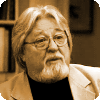 Lászlo
Kovács ASC - (b. May 14, 1933, Hungary) Lászlo
Kovács ASC - (b. May 14, 1933, Hungary)
Legendary Cinematographer.
"The great achievements of Laszlo
Kovacs, A.S.C., are not only those of a world-renowned and
respected cinematographer, but also those of a man of courage,
strength, and determination who overcame great obstacles to
achieve his filmmaking dreams." - hollywoodawards.com
International Film Festivals have celebrated "the
extraordinary impact Kovacs has made in advancing the art of filmmaking."
They also cited his influence on young filmmakers in every part of
the world. Laszlo Kovacs has compiled more than 60 narrative films
credits, including Easy Rider, Five Easy Pieces,
Paper Moon, Close Encounters of the Third Kind, Shampoo,
The Rose, New York, New York, What’s Up Doc?, The Last
Waltz, The Runner Stumbles, Ghostbusters, The Mask,
Little Nikita, F.I.S.T., Blow Out, Legal Eagles,
My Best Friend’s Wedding, Return to Me, Copycat, Multiplicity,
Sliver, and Miss Congeniality.
Kovacs was born and raised in Hungary during the World
War II Nazi occupation of his native land. His parents were farmers,
who lived in a small village some 60 miles from Budapest. Despite
his penchant for skipping school to go to the movies and a less-than-perfect
academic record, Kovacs, on his second try, was accepted at the Academy
of Drama and Film Art in Budapest, where George Illes, a legendary
Hungarian filmmaker and head of the cinema department, took him under
his wing. Kovacs was in his final year at school in 1956, when a spontaneous
revolt that began on the streets of Budapest seemed to be on the verge
of moderating the communist regime. Kovacs and Vilmos Zsigmond, ASC,
a recent graduate, borrowed a 35mm camera from the school, along with
a generous supply of film. They used the camera to document incredible
acts of bravery as citizens armed only with homemade weapons tried
to stop Soviet tanks and soldiers when they poured into the city en
masse and brutally crushed the revolt. Kovacs and Zsigmond were forced
to flee or face severe reprisals at the hands of the invading Russians.
They arrived together in the U.S. as political refugees in 1957.
Kovacs worked his way up from prints to documentaries
and a low budget Western. His talents were noticed and he was
introduced to Robert Altman and Peter Bogdanovich with whom he worked
on a number of their earliest films. In 1969, Lewis introduced Kovacs
to Dennis Hopper who was getting ready to shoot a film with Peter
Fonda and Jack Nicholson. The reluctant Kovacs agreed to film "Easy
Rider" and the rest is history!
Trivia: Wears a T-Shirt that says "I
am not Vilmos" (Acclaimed Cinematographer friend and colleague,
Vilmos Zsigmond that is!)
- Read above excerpt in more detail at The
International Cinematographer's Guild
- See his full filmography and more at IMDB.com
- See Cinematographyworld.com,
the American Society of Cinematographers Website.
- See an Interview
with Laszlo Kovacs
- Buy his videos at Barnes
and Noble.com
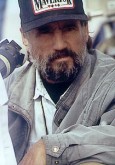 Vilmos
Zsigmond (ASC) - (b. June 16, 1930, Szeged, Hungary) Vilmos
Zsigmond (ASC) - (b. June 16, 1930, Szeged, Hungary)
Legendary Cinematographer - Oscar Winner
and Multiple Oscar Nominations!
First cinematographer to use the Panaflex camera on a movie -- "The
Sugarland Express." From
Cinequest.org
- "...Son of a celebrated soccer player and coach, Zsigmond developed
an interest in photography while in high school. After his graduation
from the State University of Motion Picture and Theater Arts in Budapest
(with friend Laszlo Kovacs), the Hungarian Revolution hit. [Along
with Laszlo Kovacs, he filmed footage of the 1956 Hungarian revolution,
supposedly with a camera concealed in a shopping bag.] His escape
from the country and pilgrimage to the United States were underway.
Eventually making connections with U.S. filmmakers, Zsigmond had the
chance to develop his new style of lighting-a combination of the "old"
classical style and the "new" flexible soft lighting. Zsigmond's
evocative look and "altering eye" found outlets in such
masterpieces as John Boorman's Deliverance (1972), Mark Rydell's
The Rose (1979), Richard Donner's Maverick (1994), Sean
Penn's The Crossing Guard (1994) and Steven Hopkins' The
Ghost and the Darkness (1996).
His long-overdue Academy Award came in 1977, with
his powerful achievements on Steven Spielberg's Close Encounters
of the Third Kind. The following year found Zsigmond's dark and
disturbing work on Michael Cimino's The Deer Hunter (1978)
receiving an Oscar nomination, and another nomination appeared for
the daring and powerful look he brought to Mark Rydell's The River
(1983)."
Trivia: Wears a T-Shirt that says "I
am not Laszlo" (Acclaimed Cinematographer friend and colleague,
Laszlo Kovacs that is!)
- See his Filmography and more at IMDB.com
- Read: "A
talk with legendary cinematographer and Cinequest honoree Vilmos Zsigmond"
 István
Szabó (b. 2/18/1938, Budapest) István
Szabó (b. 2/18/1938, Budapest)
Director, Writer, Producer - Academy Award
in 1981 Though he stayed
home in Hungary, he won an Academy Award in 1981 for his acclaimed
film "Mephisto." Other recent credits include "Sunshine,"
"Meeting Venus," and "Oberst Redl."
See his filmography and more at IMDB
Beatrix Aruna Pasztor - (b. Budapest,
Hungary)
Costume Designer Beatrix (Beáta) studied
at the Academy of Applied Arts, graduating in 1984. While finishing
her diploma, she designed couture shoes and costumes for theatrical
productions and constructed Bauhaus costumes for Carlos Godzi's 15th
century play The Deer King. These costumes became part of the
first Hungarian theatre exhibition to travel throughout Eastern Europe.
She moved to New York in 1984 to pursue her career, and earned a living
as a hat designer and a window display dresser at Bloomingdale's and
Henry Bendel's before landing jobs on low-budget films in New York.
In 1988 she relocated to Los Angeles and soon found great success.
Altogether, Pasztor has designed costumes for 20 feature films including
Psycho, Indecent Proposal, An American Rhapsody,
John Q, Monkeybone, She's So Lovely, Drugstore Cowboy, U-Turn,
Excess Baggage, Bad Company, The Fisher King, My Own Private
Idaho, A Dog of Flanders, Even Cowgirls Get the Blues,
To Die For, and Good Will Hunting.
- See Psycho:
The Production
- Buy her films at Videoflicks
- See her filmography on IMDB
 Andre
de Toth (a.k.a. Tóth Endre, b. May 15, Mako, Hungary, 1913) Andre
de Toth (a.k.a. Tóth Endre, b. May 15, Mako, Hungary, 1913)
Director - Oscar Nomination, "The
Gunfighter" The son of
a Hungarian military officer, Andre De Toth studied law at the Royal
Hungarian University in Budapest. His academic career was shelved
when De Toth became involved with the Hungarian film industry, where
he served in several artistic and technical capacities before graduating
to director in 1938. After completing five features in the space of
one year, he was brought to England by fellow Hungarian Alexander
Korda, who hired De Toth as second unit director on The Thief of Baghdad
(1940). Then he moved to Hollywood and worked again for Korda shooting
second-unit for Jungle
Book (1942). A full-fledged Hollywood director by 1943, De Toth
specialized in westerns and adventure films; one of these, Slattery's
Hurricane (1949), co-starred the director's then-wife Veronica
Lake, whose fame was diminishing even as her husband's was descending.
Andre de Toth's second American production, None
Shall Escape in 1944, was a remarkable achievement, an intense,
at times almost harrowing, experience that deals with the issue of
what to do with Nazi war criminals-not on an impersonal level, as
did Judgment at Nuremberg a few years later, but on a one-to-one basis.
De Toth is also well known for his embrace of 3-D films of the 1950s,
House
of Wax (1953) and The
Stranger Wore a Gun (1953); the fact that De Toth had lost one
eye did not diminish his lifelong fascination with stereoscopic photography,
nor his expertise in this field. In 1950, De Toth was nominated for
an Oscar for his work on the screenplay of The Gunfighter (1950).
Though his last official directorial credit was for 1970's El
Condor, De Toth made several significant (and uncredited) contributions
to the 1978 big-budgeter Superman:
The Movie. Arguably de Toth's greatest American films are two
of his last, Day of the Outlaw and Play Dirty. In 1994, Andre De Toth
published Fragments
a memoir.
- See his Filmography and more at IMDB.com
- Read an interesting look at his work "Harsh
Master"
Dezsö Magyar (b. Hungary)
Director / Screenwriter: Chair, American Film Institute Conservatory,
Master Filmmaker-in-Residence: Directing From
The American Film Institute:
Born and educated in Hungary, Dezso Magyar was a renowned director
of a number of banned Hungarian films and was the elected head of
the progressive Studio Bala Balazs before coming to the United States.
His Hungarian features are Agitators and Punitive Expedition
(prizes at the Oberhausen Film Festival, the Locarno International
Film Festival and official selection at the Cannes Film Festival).
His American feature film credits include Streets of Gold, No Secrets,
King of America, and Off Beat.
Magyar was Director of the AFI Conservatory between
1989 and 1994. In 1994, he left to become Artistic Director of the
Canadian Film Centre (chaired by Norman Jewison) where he oversaw
curriculum, faculty and production of short dramatic films. He was
also Executive Producer of the Canadian Feature Film Project, the
producer of such acclaimed films as Cube, Rude, Klutch, and
Uncles. Magyar returned and was named chair of the AFI Conservatory
in June of 2000.
See AFI
 Lajos
Koltai, HSC, ASC (b. 4/2/1946, Budapest) Lajos
Koltai, HSC, ASC (b. 4/2/1946, Budapest)
Cinematographer - Oscar Nomination for "Malčna"
and worked on numerous Oscar-Nominated Films Lajos
shot his first Super 8 film during a family vacation when he was 14
years old. After that experience, Koltai began writing, directing
and shooting "little films" starring his friends and family.
One year, he won first and second prize at an amateur film festival
where a promising young director named Istvan Szabo headed the jury.
Koltai graduated from the School of Drama and Film in Budapest, which
also nurtured Vilmos Zsigmond, ASC and Laszlo Kovacs, ASC.
Koltai subsequently shot many films with Szabo including
the Oscar-winning Mephisto, the Oscar-nominated Confidence,
Colonel Redl, and most recently the epic multi-generational
family story Sunshine that earned cinematography prizes in
Europe. His body of work also includes Time Stands Still, Taking
Sides, White Palace, Wrestling Ernest Hemingway, Born Yesterday, When
a Man Loves a Woman, Home for the Holidays and Just Cause,
among an eclectic blend of more than 60 European and United States-made
films. Current projects are "Max" with John Cusack, and
"The Palace Thief" with Kevin Kline.
See his filmography at IMDB
 Sir
Alexander Korda - (b. Sandor Laszlo Kellner, Turkeve, Hungary,
9/16/1893, d. January, 1956) Sir
Alexander Korda - (b. Sandor Laszlo Kellner, Turkeve, Hungary,
9/16/1893, d. January, 1956)
Legendary, Oscar Nominated
Producer / Director: A "Hollywood Renegade"
& Founding Member of The Society of Independent Motion Picture Producers.
Founder and guiding force behind the British film industry: the only
"British Movie Mogul" and "Savior of the British film
industry." He was the oldest
of three sons to a Hungarian Jewish family. As a young boy, Sandor's
sight was damaged by the improper treatment of an eye condition. Throughout
his life he always wore thick glasses. Despite this detriment, he
was a voracious reader, and acquired a near-photographic memory. Throughout
his life he also mastered about a half-dozen languages, and was known
to be a brilliant (some say "hypnotic") conversationalist.
Age age thirteen Sandor suffered the death of his
father, and shortly thereafter Sandor left the capital Budapest. There
he became a short story writer for a daily newspaper. Here he adopted
the pseudonym "Korda," and became a full-time reporter at
age sixteen. Sandor Korda also contributed crime stories and wrote
reviews, and became the paper's night editor.
In 1911 he set out to start a career in films and
spent several months in Paris, doing odd jobs in the Pathé studio
-- at the time, the most advanced film factory in the world. He returned
to Hungary and joined a film company in Budapest. Though the Hungarian
film industry was in its infancy, the country would produce a surprisingly
rich heritage of film. Influential filmmakers like Alexander Korda,
Michael Curtiz, and George Cukor were Hungarian. The country also
boasted the world's first film journal. Korda helped found the Hungarian
film industry. He soon called himself Alexander Korda and worked in
the studios of Vienna, Berlin and Hollywood before becoming a naturalized
and, in 1943, a knighted Englishman.
Together with his brothers Vincent (a production /
art designer) and Zoltan (a director), Korda settled in London, and
made the Oscar nominated film, The Private Life of Henry VIII,
perhaps the most influential British film of all time. The movie was
an international blockbuster and is credited with single-handedly
creating a boom film market in England. Alexander Korda became the
first member of the film industry to be knighted. Korda helped
define the cinematic image of the British Empire.
The vast Denham Studios were built by Korda on money
borrowed from the Prudential Insurance company. Among the films he
produced in the pre-war period were The
Scarlet Pimpernel, Sanders of the River, Things
to Come, The Ghost Goes West, Rembrandt,
Knight Without Armour, Elephant
Boy, The
Drum, The
Thief of Bagdad and many more. The bubble burst and the studios
were sold up, but after the war Korda renewed his energies, producing
such post-war successes as The
Fallen Idol, The
Third Man, Seven Days to Noon, The
Sound Barrier and Richard
III.
Trivia
- He married the beautiful actress Merle Oberon
- His nephew, Mihaly (Michael) Korda would go on
to be a best-selling author and star publisher and Editor-in-Chief
at Simon & Schuster
- More on Hollywood.com
or
- Hollywood
Renegades.com or
- Alexander
Korda: Biography
Zoltan Korda - (b. Zoltan
Kellner, Turkeve, Hungary, 1895)
Acclaimed Director The brother of Alexander
Korda, Zoltan Korda achieved recognition in his own right
as a director of action films. A one-time cavalry officer, Korda entered
films as a cameraman and later became an editor before moving into
the director's chair in the '30s at his brother's London Films. It
was as a director that his military background proved invaluable --
Zoltan Korda knew how to deploy men and horses to maximum effect,
and the battle scenes in the films he directed, including The
Four Feathers and Drums,
as well as parts of The Thief of Baghdad, helped make those
movies among the most exciting in history. During World War II, Korda
also directed Sahara for Columbia Pictures, which remains one of the
most enduring and impressive of World War II action films and one
of Humphrey Bogart's best pictures as well.
One of the ironies of the relationship between Zoltan
Korda and his older brother was their politics. Zoltan was a liberal
with leftist leanings, where Alexander was a proud British imperialist
-- all the funnier, because they were Hungarian-born -- and the two
frequently clashed over the content of their films. Zoltan would shoot
a picture like Sanders of the River as a sympathetic portrait of oppressed
peoples under an imperialist system, and Alexander would recut the
material to reflect the pro-British position. In later years, they
reached an accomodation of sorts, with Zoltan directing and Alexander
distributing a film adaptation of Alan Paton's anti-apartheid book
Cry The Beloved Country.
- More on Hollywood.com
 Vincent
Korda - (b. Vincent Kellner, Turkeve, Hungary, 1897, d. 1979) Vincent
Korda - (b. Vincent Kellner, Turkeve, Hungary, 1897, d. 1979)
Oscar Winning Film Art Director
Distinguished art director with multiple Oscar
Nominations. Vincent Korda trained as a painter at Budapest Academy
of Art, and at the Academies of several other cities. Most often associated
with his brothers Alexander and Zoltán Korda, he became famous in
his own right as designer of such London Films productions
as "The Private Life of Henry VIII," "The
Thief of Baghdad" for which he won an Oscar, and for the
futuristic vision of the ambitious science fiction tale, "Things
to Come," a landmark in feature film production design and
Britain's biggest sci-fi film of the 1930s, adapted from H.G.Wells. He
received Oscar nominations for "The Longest Day,"
"Lady Hamilton," and "The Jungle Book."
- Read more on Hollywood.com
or
- BritMovie.com
or
- ScreenOnline
or
-
IMDB
 Michael
Korda (b. 1933, London, England) Michael
Korda (b. 1933, London, England)
Best-Selling Author and Superstar Publisher and over 40 years
as Editor-In-Chief of Simon & Schuster
The talented nephew of Hungarian-born film magnate
Sir Alexander Korda, he was born to an English mother, baptized in
the Anglican church, and grew up in England surrounded by brilliant
and famous people. But he was unsure about his future when he left
Oxford. After an international education (England, America, Switzerland,
France) Korda wound up in New York in the late '50s. There, with the
aid of family connections, he got a job doing research for playwright
Sidney Kingsley and later worked as a script reader for CBS. Drifting
into publishing in New York in the 1950s, he joined Simon & Schuster
in 1958.
Korda is known for writing with style and wit. His
novels "Charmed Lives," in which he tells the story of his
celebrated show-business family in his 1979, "The Fortune,"
"Power!," and "Queenie" a fictional biography
of his aunt Merle Oberon, were all best-sellers. He has also written
a memoir of his years in publishing, "Another Life," that
makes his arcane industry as entertaining and dramatic as any of the
novels he published. The editors of Publishers
Weekly chose "Another Life" for inclusion in their "100
Best Books for 1999." Most recently, Man to Man, provides
a helpful and timely account of his bout with prostate cancer.
His cast of clients is amazing -- Ronald Reagan, Richard
Nixon, Mafia boss Joe Bonanno, faded movie legend Joan Crawford, super-agent
'Swifty' Lazar, noted writers Graham Greene (whom he had known since
adolescence) and Tenessee Williams, schlockmasters Harold Robbins
and Jacqueline Susann. Using his inside knowledge of many of his clients,
he was the screenwriter for "Isn't She Great," with Bette
Midler, the real-life story depicting the vibrant, flamboyant and
sometimes outrageous life of author and celebrity Jacqueline Susann
and her husband and manager Irving Mansfield.
- A review of his book Another
Life
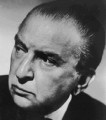 Fritz
Reiner - (b. 12/19/1888, Budapest, d. 11/25/1963, New York
City) Fritz
Reiner - (b. 12/19/1888, Budapest, d. 11/25/1963, New York
City)
Legendary Conductor: A "Foremost Conductor
of his Time" and "Genius
Orchestra Builder" Fritz
Reiner was a legend among conductors. Universally admired for his
music making, widely disliked for his aggressive and exacting temperament,
and survived by a legacy of definitive recorded performances, he was
largely responsible for the artistic ascendancy of the Chicago Symphony
Orchestra, and exerted considerable influence on generations of musicians.
Reiner studied piano with his mother. At 15, he studied
with Bela Bartok at the renowned Franz Liszt Academy that has produced
many outstanding conductors and musicians including Reiner, Bartok,
Kodaly, Dohnanyi, Szell, Ormandy, Solti and Dorati. He also graduated
in law from the University in Budapest. At the age of twenty one he
became the Chorusmaster of the Budapest Opera and two years later
the conductor of the Budapest Volksoper. From 1914 to 1922 he was
principal conductor of the Royal Opera in Dresden. At Dresden he worked
with Richard Strauss on productions of his early operas and conducted
the German premiere of Die Frau Ohne Schatten. Reiner left Europe
to become the appointed director of the Cincinnati Symphony Orchestra
a post he held until 1930. In 1928 he became an American citizen.
He married his second wife Cincinatti actress Carlotta Irwin in 1930.
From 1931-1941 Reiner served as head of the orchestra
and opera departments at the Curtis Institute of Music where Leonard
Bernstein was his student supervised activities of the Philadelphia
Academy of Music and was a frequent guest conductor at the Philadelphia
Grand Opera. During that time he also participated in opera festivities
at Covent Garden in honor of King Edward VIII's coronation and Wagner
performances at the San Francisco Opera from 1936-1938. In 1938 Reiner
was appointed conductor and music director of the Pittsburgh Symphony
resigning in 1948 over financial disputes. He became conductor at
the Metropolitan Opera in New York City where he debuted with a historic
performance of Strauss' Salome on February 4, 1949. From 1953-1962
Reiner conducted the Chicago Symphony which he raised to international
stardom.
- Buy his CD's on Yahoo!
shopping or
- Read an interesting critique of his works at Frtiz
Reiner: The Art of Economy
 László
Moholy - Nagy, (b. Bácsborsod, Hungary 7/20/1895, d. 1946) László
Moholy - Nagy, (b. Bácsborsod, Hungary 7/20/1895, d. 1946)
Avant-Garde Painter, designer, and experimental photographer: A Founder
of Constructivism, Professor and Director
at the Bauhaus School of Design, Chicago, and Founder
and head of the Chicago Institute of Design
Laszlo Moholy-Nagy first expressed his creative interests through writing.
He contributed short stories to the Hungarian periodical Jelenkor (Our
Age), published by the aesthetician Iván Hevesy. While training to be
a lawyer at the University of Budapest, Moholy-Nagy was drafted into
the Austro-Hungarian Army and called to the Russian front during World
War I. It was during this period that Moholy-Nagy began to experiment
with visual art, making over 400 drawings on military-issued postcards.
After World War I, Moholy-Nagy returned to Budapest where he became
active in the Hungarian avant garde, aligning himself with the circle
of intellectuals and artists led by Lajos Kassák. A
founder of CONSTRUCTIVISM, and a professor at the BAUHAUS (1923-28),
he directed the Bauhaus School of Design, Chicago, until 1938, and
then opened and headed the Chicago Institute of Design. His teaching
influenced American commercial and industrial design, and he wrote
The New Vision (1928) and Vision in Motion (1947). For more, visit:
- László
Moholy-Nagy: From Budapest to Berlin, 1914-1923
- Encyclopedia.com
- www.artincontext.org
- The
Poster Shop
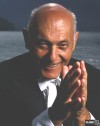 Sir
Georg Solti - (b. 10/21/1912, Budapest, Hungary, d. 9/5/1997,
Antibes, France) Sir
Georg Solti - (b. 10/21/1912, Budapest, Hungary, d. 9/5/1997,
Antibes, France)
Legendary Conductor: Record number of
Grammys Born György Stein, Solti
studied piano and composition with Ernst von Dohnanyi, Zoltan Kodaly
and Béla Bartók at the Franz Liszt Academy in Budapest, giving
his first concert at the age of twelve. He began working as assistant
at the Budapest Opera in 1930 and was director of music there from
1934 to 1939. In the summers of 1936 and 1937 he was assistant to
Arturo Toscanini at the Salzburg Festival, an encounter that left
a deep impression on the young musician. After the outbreak of the
Second World War, he emigrated to Zurich, resuming his career as a
pianist. He won first prize at the Geneva International Competition
in 1942. His career really began after the end of the Second World
War.
For almost twenty-five years, he concentrated entirely
on conducting operas. He was chief musical director of the Munich
Opera from 1947 to 1951 and of the Frankfurt Opera from 1952 to 1961.
Covent Garden excelled during his tenure as musical director (1961-71).
In 1961 he was appointed as musical director of the Los Angeles Philharmonic
Orchestra, but hardly ever worked in this position since the orchestra's
management had appointed an assistant without asking him (the assistant
was none other than Zubin Mehta!). In 1969 he took over as director
of the Chicago Symphony Orchestra and his second career as a conductor
of orchestral music began. He remained in this post until 1991. From
1972 to 1975 he was also director of the Orchestre de Paris. In 1973,
Rolf Liebermann appointed him as musical adviser to the Paris Opera.
From 1979 to 1983 he was director of the London Philharmonic Orchestra.
In 1992 he took over from Herbert von Karajan as artistic director
of the Salzburg Easter Festival (until 1994). In 1995 he was artistic
adviser to the festival that replaced the Schleswig-Holstein Music
Festival.
- For his outstanding contribution to music, he received
a knighthood from Queen Elizabeth II of Great Britain in 1972.
- Buy his CD's and read more at iClassics.com
or
- A Short
Biography
 Friedrich
Schorr - (b. 09/02/1888, Nagyvárad, Hungary, d. 8/14/1953,
Farmington, CT) Friedrich
Schorr - (b. 09/02/1888, Nagyvárad, Hungary, d. 8/14/1953,
Farmington, CT)
Renowned "mahogany-colored" Bass-Baritone  Schorr
initially intended to become a lawyer. His father was an attorney,
but also a renowned Jewish cantor who had a first-class baritone voice
himself. His son Friedrich had a beautiful voice and studied singing
at Brno with Adolf Robinson, the teacher of Leo Slezak. Robinson recommended
the young bass-baritone to the management of the Chicago Opera and,
during his vacation, he had the opportunity to appear in small roles.
He made his debut at Graz as Wotan in Walküre! His success was great
and Schorr was immediately offered a four-year contract. He
remained there until 1916. Schorr
initially intended to become a lawyer. His father was an attorney,
but also a renowned Jewish cantor who had a first-class baritone voice
himself. His son Friedrich had a beautiful voice and studied singing
at Brno with Adolf Robinson, the teacher of Leo Slezak. Robinson recommended
the young bass-baritone to the management of the Chicago Opera and,
during his vacation, he had the opportunity to appear in small roles.
He made his debut at Graz as Wotan in Walküre! His success was great
and Schorr was immediately offered a four-year contract. He
remained there until 1916.
His fame as a Wagner singer spread rapidly.
From 1916 until 1923 he appeared at the opera houses of Prague and
Cologne and became a guest star of the Berlin Staatsoper, Covent Garden
and Bayreuth. He also sang roles like Amonasro, Escamillo, Barak,
Borromeo, Dr. Faust (Busoni), Scarpia, Michele and Pizarro. The main
part of his career, however, he spent in the U.S.A. Impresario Gatti-Casazza
heard him as Hans Sachs and engaged him in 1923. Friedrich Schorr
appeared at the Met until 1943 and made guest appearances all over
the world. In March 1943 he gave his farewell performance at the Met
in Siegfried. He continued to appear in concerts and became director
of the Manhattan School of Music in New York. He also directed
productions at the City Centre Opera in New York. He was also a very
successful vocal coach.
Trivia:
- Charles Nelson Reilly, the zany television personality,
Tony Award-winning actor, and acclaimed opera and stage director
is honorary chairman of the Friedrich Schorr Memorial Performance
Prize in Voice international competition. He was a student of Mrs.
Friedrich Schorr at the Julius Hartt School of Music in Hartford,
Connecticut.
- Buy CD's and see more at Yahoo!
Shopping
 Ferenc
Rofusz - Ferenc
Rofusz -
Animator: Oscar in 1981 for
his animated film, "The Fly" (A Légy) - the first Hungarian
Oscar for a cartoon. The film is a simple story
about a day in the life of a housefly. The short is a perfect example
of how a simple plot can be very compelling when the animation is
solid. The fact that the film is totally from the point of view of
the fly, along with the building tension provided by the sound, the
viewer truly feels for the insect and his situation. And for students,
THE FLY is an amazing example of perspective and foreground-to-background
movement.
- See an interview in Hungarian here
- Read a great article on Hungarian Animation entitled, "Beyond
the frames: Will this art survive?"
- See Animated
cartoons in Hungary
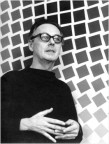 Viktor
Vasarely - (b. 4/9/06, Pécs, Hungary, d. 1997) Viktor
Vasarely - (b. 4/9/06, Pécs, Hungary, d. 1997)
 Famed
painter known for his geometrical forms, he is the father
of Op-Art Famed
painter known for his geometrical forms, he is the father
of Op-Art He began as a medical
student in Budapest before studying art (1928-9) at the "Budapest
Bauhaus' (the Mühely Academy). He settled in Paris in 1930. He pioneered
the visually disturbing effects that were later called Op Art and
began experimenting with the use of optical illusion during the 1930s,
although the style of geometric abstraction for which he is best known
dates from the late 1940s. His paintings were characterized by their
repeated geometric forms and interacting vibrant colors which created
a visually disorientating effect of movement. He also experimented
with Kinetic Art.
His motto is "Art for all"
and the Paris subway is full of his modern works.
- See the beautiful official website, Vasarely.org
 Pierre
Székely (b.Budapest, Hungary, 6/11/1923, d. 4/3/2001, Paris) Pierre
Székely (b.Budapest, Hungary, 6/11/1923, d. 4/3/2001, Paris)
Renowned Sculptor and Architect - the "Incessant
Adventurer"  Known
for his monumental scuplture in granite and marble. His work is present
on four continents and was considered to be a guiding force of his
generation. Pierre Szekely learned to sculpt stone on his own, before
attending art school. He came to Paris in 1946 where he formally studied
design, modeling and wood sculpture. He specialized in the creation
of monumental sculptures and worked in close collaboration with architects
on problems of architectonic integration and sculptural games for
children. His work employs the concept of symmetry,
a movement started in Hungary, which he, Vasarely, and the many Hugnarian
professors at the Bauhaus, were pioneers. Known
for his monumental scuplture in granite and marble. His work is present
on four continents and was considered to be a guiding force of his
generation. Pierre Szekely learned to sculpt stone on his own, before
attending art school. He came to Paris in 1946 where he formally studied
design, modeling and wood sculpture. He specialized in the creation
of monumental sculptures and worked in close collaboration with architects
on problems of architectonic integration and sculptural games for
children. His work employs the concept of symmetry,
a movement started in Hungary, which he, Vasarely, and the many Hugnarian
professors at the Bauhaus, were pioneers.
He is founder of the European Institute of Technology
of Granite. Some of his noteworthy works of sculptural architecture
are the "Chapelle du Carmel" in Valenci-ennes, France; his rose
granite sculpture in Budapest entitled "Monument to Peace";
and for "Impossible Bird" which French President Mitterand
presented to Israeli President Menachem Begin. Pierre Szekely was
decorated with the French National Order of Merit in 1980 and was
inducted into the French Legion of Honor
- Read
more and see and hear Pierre in a video (In French)
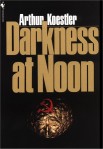  Arthur
Koestler - (b. 1905, Budapest, d. 3/3/1983) Arthur
Koestler - (b. 1905, Budapest, d. 3/3/1983)
Influential Journalist and Author of "Darkness
at Noon," among the 20th century's most influential
novels Few literary figures have influenced
the course of modern history like Arthur Koestler. As a prominent
journalist, memoirist and popular science writer, Koestler chronicled
the dehumanizing brutality of totalitarianism. His publicized split
with the Communist International earned Koestler honorary standing
as a literary cold warrior. Darkness at Noon catapulted Koestler
to prominence as a somber critic of communist oppression. It ranks
consistently among the 20th century's most influential novels.
Though he studied science and psychology in Vienna,
at the age of twenty he became a foreign correspondent and worked
foe various European newspapers in the Middle East, Paris, Berlin,
Russia and Spain. During the Spanish Civil War, which he covered from
the Republican side, he was captured and imprisoned for several months
by the Nationalists, but was exchanged after international protest.
In 1939-1940 he was interned in a French detention camp. After his
release, due to British government intervention, he joined the French
Foreign Legion, subsequently escaped to England, and joined the British
Army.
Like many other intellectuals in the thirties, Koestler
saw in the Soviet experiment the only hope and alternative to fascism.
He became a member of the Communist Parry in 1931, but left it in
disillusionment during the Moscow purges in 1938. His earlier books
were mainly concerned with these experiences, either in autobiographical
form or in essays or political novels. Among the latter, Darkness
At Noon has been translated into thirty-three languages.
After World War II, Mr. Koestler became a British
citizen, and all his books since 1940 have been written in English.
He now lives in London, but he frequently lectures at American universities,
and was a fellow at the Center for Advanced Study in the Behavioral
Sciences at Stanford in 1964-65. In 1968 Mr. Koestler received the
Sonning Prize at the University of Copenhagen for his contributions
to European culture. He is also a Commander of the Order of the British
Empire, as well as one of the ten Companions of Literature, elected
by the Royal Society of Literature. His works are now being republished
in collected editions of twenty volumes.
He established The Koestler Foundation, which exists
to promote research in parapsychology and other fields. In his will
Koestler left his entire property to found a Chair of Parapsychology
at the Edinburgh University. In the 1970s Koestler was made a Commander
of the Order of the British Empire and a Companion of Literature.
Facing incurable illness - Parkinson's disease and terminal leukemia
- and as a lifelong advocate of euthanasia, Koestler took his own
life with his wife, who, however, was perfectly healthy. Koestler
died of a drug overdose - death was reported on March 3, 1983. In
her suicide note Cynthia Koestler wrote, "I cannot live without
Arthur, despite certain inner resources."
- See more and read some Koestler quotes here
or
- a great biography
- Arthur Koestler
Project or
- Adrift
in the Diaspora or
- buy his remarkable books at Amazon
 Csontváry
Kosztka Tivadar (b. 1853, Kisszeben, Hungary, d. 1919, Budapest) Csontváry
Kosztka Tivadar (b. 1853, Kisszeben, Hungary, d. 1919, Budapest)
Famed Painter: Picasso once chided Chagall that he
could not produce a painting half as good as one of Csontvary's.
Although he died at the age of sixty,
his creative period was very short. He started his art studies in
1894; he painted his major pictures between 1903 and 1909. His oeuvre
consists of about one hundred paintings and twenty drawings - not
too many, but his paintings were the first great summary of modern
art in Hungary. Csontváry's decision to become a painter was influenced
by his schizophrenia. He worked for fourteen years in order to become
financially independent, and started to study painting at the age
of forty-one: first in Munich under Simon Hollósy, then in Karlsruhe
under Kallmorgen.
 In 1895 be travelled to Dalmatia and
Italy to paint landscape studies. His individual style - best illustrated
by "Trees in Electric Light a Jajce" and "Storm over
the Great Hortobágy" - was fully developed by 1903. In the beginning
of the same year, he travelled to he Near East in search of the "great
motif". The dramatic, expressive representation of "Great
Tarpatak" is a conclusion of this search. He worked on his other
monumental, singularly expressive painting. "The Ruins of the
Greek Theatre at Taormina" between 1904 and 1905. "Balbeck"
is the last piece of this period, which was characterized chiefly
by his pantheism and by his expressive use of colours. In 1895 be travelled to Dalmatia and
Italy to paint landscape studies. His individual style - best illustrated
by "Trees in Electric Light a Jajce" and "Storm over
the Great Hortobágy" - was fully developed by 1903. In the beginning
of the same year, he travelled to he Near East in search of the "great
motif". The dramatic, expressive representation of "Great
Tarpatak" is a conclusion of this search. He worked on his other
monumental, singularly expressive painting. "The Ruins of the
Greek Theatre at Taormina" between 1904 and 1905. "Balbeck"
is the last piece of this period, which was characterized chiefly
by his pantheism and by his expressive use of colours.
Csontváry first showed his works in
Paris in 1907, then travelled to Lebanon. His symbolic paintings of
mysterious atmosphere were painted there: "Lonely Cedar",
"Pilgrimage to the Cedars in Lebanon" and "Mary's Journey
in Nazareth". His next exhibitions were in 1908 an in 1910, but
they did not bring him the recognition he had so earnestly hoped for.
The last major canvas. "Riding along the Beach" was painted
in Naples in 1909. After this year he hardly painted, loneliness and
the lack of understanding caused in him such a severe mental condition,
that he was able to create nothing else, but sketches of surrealistic
visions.
- Visit the following Hungarian site:
The Csontváry Múzeum
(great site) in Pécs for images and link to his own Autobiography.
- See Artworks by Tivadar
CSONTVÁRY KOSZTKA
- Also see, Hidden
Masterpieces, in the UK.
 Christina
Kiss - (b. Budapest, Hungary) Christina
Kiss - (b. Budapest, Hungary)
Renowned Pianist: one of the foremost Liszt interpreters of our
time Internationally acclaimed as an artist
of world class statue, Christina Kiss is recognized as one of the
foremost Liszt interpreters of our time. She is performing the entire
Liszt cycle at Carnegie Hall (over a thousand works) from memory performed
over several years. Presently in its ninth New York season, she will
complete the cycle of over 60 recitals in the year 2010. Critics have
said, her Liszt Cycle is akin to climbing Mount Everest. Ms. Kiss
has already played more Liszt works in concert than any other pianist,
thus making this series one of the truly important and historic piano
cycles of all time. Concert tours have taken her to Italy, Spain,
Greece, Austria, Hungary, France, Belgium, Israel and the U.S. She
is a frequent soloist with the world's leading orchestras including
the Barcelona, Cincinnati and Budapest Philharmonic.
Born in Budapest, Miss Kiss completed her studies
at the Franz Liszt Academy and Juilliard with Gyorgy Sandor and Kornel
Zempleni. She received First Prize at Barcelona's 1979 Maria Canals
International Piano Competition, First Prize at Cincinnati's International
American Music Competition, and two dozen additional prizes at international
competitions on three continents including the Athens, Dino Ciani,
Van Cliburn, Gina Bachauer and the Liszt-Bartok
Watch an excerpt from one of Christina's like performances
Real Video
 George
Széll - (b. Budapest 6/7/1897, d. Cleveland, Ohio 1970) George
Széll - (b. Budapest 6/7/1897, d. Cleveland, Ohio 1970)
Legendary Conductor: "One of the greatest
conductors of symphony and opera of the twentieth century"
Part of the wave of great Hungarian conductors who
took over American musical life just before and after World War II
(the others included Fritz Reiner, Antal Dorati, and Eugene Ormandy),
George Szell quickly transformed a middling Midwestern orchestra into
one of the nation's Big Five. His cultivation of the Cleveland Orchestra
set an example of discipline and hard work that gradually helped raise
the standards of orchestras across America.
Considered a child prodigy, he first performed in
a public concert at the age of eleven. At age sixteen he conducted
the Vienna Philharmonic Orchestra. The next year he appeared with
the Berlin Philharmonic Orchestra as conductor, pianist, and composer.
During this time, Richard Strauss heard Szell perform his transcription
of the composer's symphonic poem TILL EULENSPIEGEL. Upon hearing Szell's
arrangement, Strauss appointed Szell to the conducting staff of the
Berlin State Opera. Szell stayed as Strauss's assistant for two years,
at which time Strauss recommended Szell as principal conductor of
the Strassburg Municipal Theater to succeed Otto Klemperer. A few
years later, Szell left the Strassburg Municipal Theater to become
conductor of the Court Theater at Darmstadt. Between the years of
1921 and 1929, he was conductor of the Berlin Broadcasting Company
and was also a member of the faculty at the renowned Hochschule für
Musik.
In 1929, Szell went to Prague to become the general
music director of the German Opera House and the Philharmonic. At
this time he started to appear as guest conductor with many of the
leading orchestra's of Europe. From 1930 to 1931 he conducted the
St. Louis Symphony Orchestra. He was so well received as a guest conductor
in England that he soon became the conductor of the Scottish Orchestra
in Glasgow, England and the Residentie Orchestra at The Hague in Holland.
The start of World War II in 1939 found Szell in Australia.
Making his way to the United States Szell was invited by Toscanini
to guest conduct the famous NBC Symphony Orchestra in New York City.
His debut attracted such wide attention that other conducting engagements
soon followed including the Cleveland Orchestra. From 1942 to 1946
Szell was one of the regular conductors of the Metropolitan Opera
House. In 1946 Szell become the conductor and music director of the
Cleveland Orchestra.
Szell had, at one time or another, conducted just
about every major symphony orchestra in the world. He also appeared
as guest conductor at the leading European summer music festivals,
including Vienna, Salsburg, Milan, Paris, Florence and Lucerne. His
compositions include; Variations for Orchestra, Symphony in B Minor,
Lyric Overture, and several chamber music works.
It goes without saying that Szell has been the recipient
of many honors and awards. These include and honorary degree of Doctor
of Music from Case Western Reserve University (1951) and a similar
degree from Oberlin College. In 1949 he received an Award of Honor
by the National Music Council, the Chevalier of the National Order
of the Legion of Honor in France (1957), Commanders' Cross, Order
of Merit in Germany (1959), Laurel Leaf Award for performing more
American contemporary works than any other conductor (1954).
- See Sony
Classical.com
- Buy the video: George
Szell, "One Man’s Triumph -The Cleveland Orchestra "
 S.Z.
"Cuddles" Sakall (b. Budapest, 2/2/1884, d. Los
Angeles, 2/12/1955) S.Z.
"Cuddles" Sakall (b. Budapest, 2/2/1884, d. Los
Angeles, 2/12/1955)
Famed Character Actor, from Casablanca fame
Chubby-jowled character actor S.Z. Sakall began as a sketch writer
for Budapest vaudeville shows, then turned to acting at age 18. Initially
billed as Szőke Szakall (the name translated to "blonde beard,"
in honor of the hirsute adornment he'd grown to appear older), the
actor became a star of the Hungarian stage and screen in the 1910s
and 1920s. Among his German-language films of the early-talkie era
were 1929's Ihre Majestaet die Liebe (remade in the U.S. as Her Majesty
Love, with W.C. Fields in Sakall's role) and the box-office hit Two
Hearts in Waltz Time (1930); he also briefly ran his own production
company during this period.
Fleeing Hitler in the late '30s, Sakall
settled in Hollywood, where from 1939 through 1955 he played an endless
succession of excitable theatrical impresarios, lovable European uncles,
and befuddled shopkeepers. His rotund cuteness earned Sakall the nickname
"Cuddles," and he was often billed as S.Z. "Cuddles"
Sakall in his later films. Nearly always featured in the supporting
cast (notably as Karl the waiter in 1942's Casablanca), S.Z. Sakall
was given the principal role of songwriter Fred Fisher in 1949's Oh,
You Beautiful Doll, though top billing went to June
Haver.
S.Z. Sakall's final performances were
seen in the 1954 film The
Student Prince and the like-vintage TV series Ford Theatre.In
Hollywood, became popular comic support and was nicknamed "Cuddles."
Some other movies: It's a Date (1940), Ball of Fire ('41), Casablanca
(Nick's waiter, '42), Tea for Two ('50), Lullaby of Broadway
('51). He wrote an autobiography in 1953: The Story of Cuddles.
AKA: Eugene Gerő Szakáll, Szőke Szakáll.
- For more visit: S.Z. Sakall or
- Read more and buy his films on Yahoo!
 Zsa
Zsa Gábor - (b. 2/6/1918, Budapest) Zsa
Zsa Gábor - (b. 2/6/1918, Budapest)
Glamorous Actress with a Hungarian Temper!
The glamorous, Hungarian-born actress,
is the middle child of the celebrated Gabor sisters. Though officially
an actress, Zsa Zsa Gabor is more famous as a whimsical celebrity
sex symbol. Married nine times, Gabor made a career of joking about
her man-hungry ways and her love of jewelry and furs. Among her husbands
was hotel millionaire Conrad Hilton and Oscar-winning actor George
Sanders. Among her more prominent films: John
Huston's Toulouse-Lautrec biopic, "Moulin Rouge," 1952;
"The Story of Three Loves," 1953; "The Girl in the
Kremlin," 1957; and Orson Welles' classic "Touch of Evil,"
1958.
In 1989, ZsaZsa gained fresh notoriety
as she was sentenced to 72 hours in jail for slapping a Beverly Hills
police officer. She also was ordered to perform 120 hours of community
service at a women's shelter. Another traffic
accident, in November of 2002, left her in a coma.
 Less
known is that Zsa Zsa Gabor is the mother of actress Constance
Francesca Hilton, the only child of all 3 Gabor sisters' marriages
and unions and the great aunt of Paris and Nicky. Francesca was born
five months after her parents were divorced; Conrad Hilton later disclaimed
her as his daughter and, although he left her with $100,000 in his
will on the condition she didn't contest, she ended up suing for a
larger part of an estate estimated at close to $50 million. Francesca
plans to tell all in a new novel about her hotel-running family. Less
known is that Zsa Zsa Gabor is the mother of actress Constance
Francesca Hilton, the only child of all 3 Gabor sisters' marriages
and unions and the great aunt of Paris and Nicky. Francesca was born
five months after her parents were divorced; Conrad Hilton later disclaimed
her as his daughter and, although he left her with $100,000 in his
will on the condition she didn't contest, she ended up suing for a
larger part of an estate estimated at close to $50 million. Francesca
plans to tell all in a new novel about her hotel-running family.
Trivia:
Zsa Zsa quotes:
-
When asked how many husbands she
had had: "You mean, other than my own?"
-
"I don't take gifts from perfect
strangers -- but then, nobody is perfect."
-
"I never hated a man enough
to give him his diamonds back."
- See and buy her films on Amazon
- Read more at Allmovie.com,
or IMDB
- See all her movie and television credits on this fan's
site
- See ALL her husbands on Fact
Index.com
 Eva
Gábor (b. 2/11/1920, Budapest, d. 7/4/1995) Eva
Gábor (b. 2/11/1920, Budapest, d. 7/4/1995)
Actress
Best known as the Gabor sister with talent,
actress Eva Gabor began her career as a cabaret singer and ice skater
in her native Hungary. Forced to emigrate to the United States at
the outbreak of World War II, Gabor was able to secure film work in
mystery-woman parts in such films as Forced Landing (1941) and Pacific
Blackout (1942). The actress didn't truly achieve star stature until
her Broadway appearance in The Happy Time (1950), though curiously
she wasn't called upon to appear in the 1952 film version of this
play. Gabor's movie career in fact remained rooted in supporting roles,
such as one of Vincent
Price's victims in The Mad Magician (1953) and as Liane d'Exelmans
in the Oscar-winning Gigi
(1958). In 1958 she was nominated for a Golden Laurel Award - Top
Female Comedy Performance for: "Don't
Go Near the Water" (1957). Like her sister Zsa
Zsa Gabor, Eva has accrued plenty of press coverage thanks to
her multiple marriages, but unlike Zsa Zsa, Gabor has managed to stay
off the police blotter - except for a 1964 incident in which she was
nearly killed fighting off a couple of vicious diamond robbers.
Eva's best-loved public appearances were manifested in her five-year
run as Lisa Douglas on the popular TV sitcom Green Acres (1965-70).
Contrary to the Gabor Sisters' image of contentiousness, Eva was well
liked on the Green Acres set by both co-star Eddie
Albert and director Richard
Bare, who had nothing but praise for her professionalism and comic
timing. Eva Gabor proved she hadn't lost her touch in 1990 when the
inevitable Green Acres two-hour revival movie made its way to television.
She was also a successful business woman with her being the owner
of Eva Gabor Wigs company. Eva died in 1995 of Respiratory failure
and is still remembered by millions.
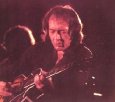 Gabor Szabo, (b.
in Budapest,1936 d: Budapest, 1982 ) Gabor Szabo, (b.
in Budapest,1936 d: Budapest, 1982 )
Jazz Great: One of the "most
original and outstanding improvisational guitarists of the 20th century"
Born Gábor István Szabó and Inspired
by a Roy Rogers cowboy movie, Szabo began playing guitar when he was
14 and often played in dinner clubs and covert jam sessions while
still living in Budapest. He escaped from his country at age 20 on
the eve of the anti-Communist uprising and eventually made his way
to America, settling with his family in California. He attended Berklee
College (1958-60) and in 1961 joined jazz legend Chico Hamilton’s
innovative quintet featuring Charles Lloyd. Urged by Hamilton, Szabo
crafted a most distinctive sound; agile on intricate, nearly-free
runs as he was able to sound inspired during melodic passages. Szabo
left the Hamilton group in 1965 to leave his mark on the pop-jazz
with another jazz legend, Gary McFarland. Szabo initiated a solo career
in 1966, recording the exceptional album, SPELLBINDER,
which yielded many inspired moments and "Gypsy Queen,"
the song the rock group, Santana, turned into a huge
hit in 1970. During the 1970s, Szabo regularly performed along the
West Coast; hypnotizing audiences with his enchanting, spellbinding
style. But from 1970, he was locked into a commercial groove – even
though records like MIZRAB
occasionally revealed the success of his jazz, pop, Gypsy, Indian
and Asian fusions.
Szabo had revisited his homeland several times during
the 1970s, finding opportunities to perform brilliantly with native
talents. He was hospitalized during his final visit and died in 1982
– just short of his 46th birthday and five years after his final American
album was released.
Dougls Payne writes, "He was one
of the most original jazz guitarists to emerge in the 1960s; mixing
his hungarian folk music heritage with a deep love of jazz and crafting
a distinctive, largely self-taught sound."
- See Doug Payne's Iconoclasm
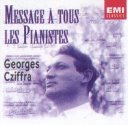 Georges Cziffra (b. 11/05/1921,
Budapest, d. 01/15/1994 in Morsang-sur-Orge) Georges Cziffra (b. 11/05/1921,
Budapest, d. 01/15/1994 in Morsang-sur-Orge)
World-renowned, Legendary Concert Pianist: The "virtuoso
showman at the keyboard!"
Tragedy, Torture, Triumph, and Tragedy...
Born Cziffra György, he became one of the most celebrated and individual
piano virtuosos in the post-War decades in Europe, especially noted
for his powers of improvisation and as a Liszt pianist.
He was born in a shanty-town called Angels
Court on the outskirts of Budapest to a family of gypsy musicians.
He said he was born in the family bathtub because they could not afford
a hospital. The family was desperately poor and ultimately both his
father (an accomplished piano and cimbalom player) and a sister died
of starvation. He began to play piano by watching an older sister's
lessons. By the age of five he was appearing in a circus, improvising
variations on request of the audience. At ten, even he was sent to
the Conservatory in Budapest. He was able to stay there only briefly,
taking piano lessons from Gyorgy Ferenczi and composition with Ernst
von Dohnanyi. He supported himself playing in nightclubs and began
to establish a recital career in Hungary, Holland, and Sweden. He
married his wife, Zuleika, shortly before he was drafted into the
Hungarian army in 1941. After the war he was imprisoned for a year
in 1946.
Returning to his wife and small son,
and with his mother and surviving sisters dependent on him, he worked
hours each day to recover his piano technique, making a living on
tips from playing jazz in bars and cabarets each night. After the
Communists gained full power in Hungary, Cziffra was imprisoned again,
for political reasons, which meant that his captors also took his
wife and son, Gyorgy Cziffra, Jr. The boy nearly died from the inhuman
conditions. Cziffra's Communist captors tortured him; knowing he was
a pianist, they went after his hands, beating on them and making him
carry heavy pieces of stone in each hand. When he was released, the
ligaments were so loose that he could not transmit the power of his
arms through his wrists, but found a certain type of wristbands gave
him the needed support. After six months of exhaustive work he recovered
his top form. His records on the Hungarian label,
Qualiton, and the Czechoslovak Supraphon label began to circulate
in Western Europe, raising him to legendary status.
When Russian troops poured into Hungary
he and his family was forced to flee. After ten days on foot, they
reached Vienna where he debuted on November 17, 1956, with outstanding
success. Debuts elsewhere in Europe followed. After one recital in
London, the Daily Telegraph said the audience "witnessed feats
of piano playing probably never to be equalled, certainly never surpassed
in their lifetime."
Cziffra eventually settled in France
with his family and took citizenship there. He undertook three major
projects: One was the establishment of a piano competition in his
name. The second was the purchase of the Royal Chapel of St. Frambourg
near Senlis, which he made a non-sectarian shrine to spirituality
and the arts. It is now known as the Foundation Cziffra. He also restored
the organ at the Abbey of La Chaise Dieu and started a summer festival
there, on the suggestion of his son, who became a conductor. It is
known as the Salle Cziffra. Gyorgy, Junior died tragically in an accident
in 1981, shortly after making his first commercial recordings. Cziffra
refused to perform with an orchestra thereafter. He retired from recording
in 1986 and left the stage in 1988. In the same year France named
him a cultural ambassador to a newly liberalized Hungary. He was diagnosed
with cancer in the early 1990s, but died in 1994 of a heart attack.
He is buried in the cemetery of Senlis near the remains of his son.
Mme Cziffra continued to direct the Foundation Cziffra.
- See The
Inkpot for CD reviews and more! or
- Buy his CD's on Yahoo!
or
- Read a GREAT biography on Piano-news.com
 Zoltán Kocsis (b. 1952,
Budapest) Zoltán Kocsis (b. 1952,
Budapest)
Piano Virtuoso, Composer, and Conductor
The pianist, composer, and conductor
awarded with the Kossuth and Liszt prizes, was born in 1952 in Budapest.
His extraordinary gift for music became evident at a very early age.
He commenced his musical studies when he was 5 years old and continued
them at the Béla Bartók Conservatory from 1963, specializing in piano
and composing. In 1968 he was admitted to the Ferenc Liszt Academy
of Music. From the start, reviews referred to him as a prodigy and
a lion of the piano, who rose above his contemporaries with his virtuosity
and his personality of elemental strength. (1981 Le Figaro writes
about the genius, 1987 the Kölner Stadt-Anzeiger mentions the miracle
of the keyboard, 1990 the Frankfurter Allgemeine Zeitung writes about
the pianist above all criticism etc).
Zoltán Kocsis is also an acknowleged
composer. He is one of the founders of the New Musical Studio of Budapest.
His works, written for the Ensemble Modern and performed together
with the ensemble at concerts, along with his Bartók and Schönberg
transcriptions, have won him considerable appreciation in the profession.
When in 1983 conductor Ivan Fischer
and pianist Zoltan Kocsis decided to establish a new orchestra, no
one guessed that this was beginning of one of the most successful
and exciting musical ventures on the Hungarian and international music
scene. After nine successful years of a few concerts every season
in 1992 it become the permanent orchestra of Budapest. Today, the
Budapest Festival
Orchestra is one of the most successful musical ensembles internationally.
Currently, he is Music Director of the Hungarian
National Philharmonic Orchestra.
- See klassik.com
for more. You can order CD's or even send questions to him from the
Website!
 Joseph
Pasternak - (b. 9/19/1901, Szilagy-Somylo, Hungary (Transylvania),
d. 9/13/1991, Hollywood, California) Joseph
Pasternak - (b. 9/19/1901, Szilagy-Somylo, Hungary (Transylvania),
d. 9/13/1991, Hollywood, California)
Prolific Film Producer/Director: Multiple
Oscar Nominations. Rescued Universal Studios Joe
Pasternak came to the US as a teenager. He was fascinated by show
business and worked several menial jobs at the Paramount Studios commissary,
learning the trade talk of the stars, technicians and executives.
Pasternak worked his way into a job as second assistant director at
Paramount in 1923, and, within three years, he was manager of Universal
Studio's Berlin operations.
In the early '30s, Pasternak made a name for himself
producing German, Austrian and Hungarian musicals. He returned to
the US at the request of the new Universal Studios management, which
was hoping to reorganize the near-bankrupt company. Joe carefully
nurtured a screen image for 13-year-old soprano Deanna
Durbin as a down-to-earth tomboy with a beautiful singing voice
and produced her first vehicle, Three
Smart Girls in 1936 for which he received an Oscar nomination
for. The film was an enormous hit, literally rescuing Universal. Pasternak
received another Oscar nomination for One
Hundred Men and a Girl in 1937. He would later rescue the film
career of Marlene
Dietrich in the 1939 film Destry
Rides Again.
Pasternak moved to MGM, which was filming lavish escapist
musicals for wartime audiences. Again he met with great success receiving
an Oscar nomination for Anchors
Aweigh. Joe retired in 1968 after producing three of Elvis
Presley's best musicals (including the immortal Girl
Happy). Suffering from Parkinson's disease, Joe died just six
days shy of his 90th birthday.
Trivia:
- See his filmography and more, and buy his films
on Yahoo!
Movies
 László
Benedek - (b.1905 Budapest - d. 3/11/1992, Bronx, NY) László
Benedek - (b.1905 Budapest - d. 3/11/1992, Bronx, NY)
Producer/Director/Writer of "The Wild One" fame
He was brought to the US by MGM. Laszlo gained acclaim
and won a Golden
Globe and Director's
Guild Award in 1951 with his 5-Oscar nominated film, "Death
of a Salesman," adapted from Arthur Miller's Pulitzer Prize-winning
social drama of a middle-aged man at the end of his emotional rope
featuring Fredric March. In 1954, he directed the classic motorcycle
rebel movie, "The Wild One" with Marlon Brando. On television,
he was prolific, responsible for such hits as "The Outer Limits,"
"Mannix," "The Untouchables," "Voyage to
the Bottom of the Sea," "Perry Mason," and the "Alfred
Hitchcock Hour." He is sometimes credited as Laslo Benedek.
- See his filmography and more on IMBD
 Lawrence
Dorr Lawrence
Dorr
Pulitzer Prize Nominated Author / Professor - The "Christian
Hemingway" As a child stricken with
polio in Hungary and unable to play traditional games with other children,
Lawrence Dorr turned to reading and writing at an early age. By the
age of 16, he was writing what he calls "trashy" stories
which he sold to earn a few cents. He also experienced war first hand
as his country was occupied by the Nazis and later the Soviets.
Dorr writes, "I escaped from Hungary (then under communist rule)
in 1946 and went to England in 1948 as a European Voluntary Worker
(indentured servant), where I worked in coal mines, cotton mills,
and (my last most significant job) as a kitchen porter in Shenley
Mental Hospital, Hartfordshire. There I met Clare, a psychiatric occupational
therapist, who would become my wife. Clare is the daughter of an English
Anglican priest (he was also a missionary); her mother hailed from
St. Helena's Island, South Carolina. I was allowed into the U.S. as
a ‘war bride’ in 1950. His experiences, including those on the Russian
front and later as a political exile, compose much of the material
for Dorr's short stories.
Collections of these stories include "A Slow,
Soft River" (1973), "The Immigrant" (1976), and "A
Slight Momentary Affliction" (1987) which was nominated for a
Pulitzer Prize. He has also written a novel entitled "The
Open Face of Heaven," and has most recently had published "A
Bearer of Divine Revelation." Dorr currently teaches creative
writing at Santa Fe Community College. Dorr has presented at the Festival
of Faith and Writing numerous times.
- Buy his books on Amazon
- Read an interview
with Dorr
 Emmerich (Imre) Kálmán
- (10/24/1882, Siofok, Hungary, d. 10/30/1953, Paris) Emmerich (Imre) Kálmán
- (10/24/1882, Siofok, Hungary, d. 10/30/1953, Paris)
Composer - The last Grand
Master of the Viennese Operetta Emmerich
(Imre) Kálmán was admitted to the Budapest Academy of Music in 1900,
together with Zoltán Kodály, to János Koessler’s composition class.
Béla Bartók had already been studying with Koessler for a year and
Leó Weiner joined them somewhat later. After his years at the Academy
a few of his works were performed, including Saturnalia and a symphonic
poem titled Endre and Johanna. In 1907 he won a Franz Joseph Prize
for his songs. As a result he was able to continue his studies in
Bayreuth, Munich and Berlin. However his career in classical music
that began so promisingly was redirected towards lighter genres following
a few brilliant cabaret songs and the success of his operetta Herbstmanöver
composed in 1908. We now know that this decision was a decisive one.
The praise expressed by his fellow composers, Bartók and Kodály, shows
that Emmerich Kálmán was exceptionally talented. His early chamber
and orchestral works were eclipsed by his later world famous operettas
and remained practically unknown. These works quite clearly demonstrate
that without his sound classical training, Emmerich Kálmán would not
have been able to achieve his later successes in the “light” genre.
For two decades,
from 1909 to 1930, Imre Kalman's compositions dominated the Viennese
entertainment theaters and all small and big stages of the German
speech area. In a bizarre turn of events, Hitler was so impressed
with Kálmán's music that he offered the composer honorary Aryan status.
He refused; his music was banned by the Nazis; and he fled Vienna,
traveling first to Paris in 1939 and then to the United States when
the Germans occupied Paris. He became an American citizen in 1942
but returned to Europe in 1949, eventually settling in Paris.
- See Imre
Kálmán
- See his stageworks at MusicalTheatreGuide.com
 Goldmark,
Karl (b. 5/18/1830, Keszthely, Hungary
– 1/2/1915, Vienna) Goldmark,
Karl (b. 5/18/1830, Keszthely, Hungary
– 1/2/1915, Vienna)
Composer Goldmark's father,
a poor cantor in the local Jewish synagogue, was unable to assist
to any extent financially in the development of his son's, one of
twenty children, talents. Yet in the household much music was made,
and on a cheap violin and home-made flute, constructed by Goldmark
himself from reeds cut from the riverbank, the future composer gave
rein to his musical ideas. His talent was fostered by the village
schoolmaster, by whose aid he was able to enter the music-school of
the Oedenburger Verein. Here he remained but a short time, his success
at a school concert finally determining his parents to allow him to
devote himself entirely to music. In 1844, then, he went to Vienna,
where Jansa took up his cause and eventually obtained for him admission
to the Conservatorium. For two years Goldmark worked under Jansa at
the violin, and on the outbreak of the anti-Habsburg revolution, after
studying all the orchestral instruments, he obtained an engagement
in the orchestra at Raab. There, on the capitulation of Raab, he was
to have been shot for a Hungarian spy, and was only saved at the eleventh
hour by the happy arrival of a former colleague. In 1850 Goldmark
left Raab for Vienna, where from his friend Mittrich he obtained his
first real knowledge of the classics.
Highly gifted in lyrical melody, he was influenced
by Wagner and had his first success with his String Quartet, Op. 8,
in 1860. He joined in the establishment of a Wagner Society in Vienna
and gradually assumed a position of great importance in the musical
life of the city. His concert overture Sakuntala (1865), his
symphony A Rustic Wedding (1870), and an opera, The Queen
of Sheba (1875), were all very popular. In addition to two symphonies
and two violin concertos, Goldmark wrote a series of concert overtures.
His popular Rustic Wedding Symphony was later championed by the great
Leonard Bernstein. A third opera, a version of Dickenss Cricket on
the Hearth, was given by the Royal Carl Rosa Company in London in
1900. Encylopedia.org
adds, "In opera he is most certainly at his best, and as an orchestral
colorist he ranks among the very highest."
Trivia:
- His nephew, Rubin Goldmark,. 1872–1936,
a pupil of Dvorák in New York, was a composer and educator. From
1924 to 1936 he was chairman of the composition department at the
Juilliard School of Music. His works include A Negro Rhapsody
(1923).
- His son, Peter
Karl Goldmark invented the color television and 33 1/3 LP!
- Read about him at the American
Symphony Orchestra
- Listen to his Violin
Sonata Suite for violin and piano in D, Op 11
- Buy his CD's on Amazon
 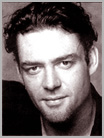 Marton
Csokas (b. 6/30/1966, New Zealand) Marton
Csokas (b. 6/30/1966, New Zealand)
Acclaimed Actor - "The Kiwi who Infiltrated
Hollywood" After WW II, Marton's
father (whom he was named for) emigrated from Hungary to New Zealand,
where he met and married Marton's mother, a New Zealander of Irish/Danish
descent. A graduate of the New Zealand Drama School in 1989, he landed
his first movie role in Jack Brown, Genius in 1994. Talent,
elvish good-looks, and a muscular 6'3" frame helped him land
the roles of the assassin Jarda in The Bourne Supremacy;
that of Russian bad guy Yorgi, opposite Vin Diesel in XXX; and
one of the most sought after roles, that of King of the Elves in the
Lord
of the Rings, husband to Galdadriel (played by the stunning
Australian Cate Blanchett). Other credits include Swimming with
Sharks, The Monkey’s Mask, Timeline, Kangaroo Jack, Broken English,
Down and Under, Rain, and as the voice of Poggle in Star Wars
Episode II: Attack of the Clones. For television, Csokas has performed
in a range of dramas including "The Three Stooges," "G.P."
(AFI Nomination), "Farscape," "Halifax f.p" and
"Wildside." Marton is known to most in the US as Khrafstar
and Borias in the 1997-1998 seasons of "Xena:
Warrior Princess" (1995).
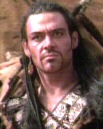 Marton’s performances on the stage include New Zealand’s productions
of "Arcadia," "Angels in America," "Julius
Caesar," "Glorius Ruins," "Amy’s View" and
"Closer." In Australia, Csokas has performed on the stage
in "A Clockwork Orange," "Twelfth Night," "The
Herbal Bed" and "Andromache" as well as an Australian
tour of "Ladies Night." Marton also co-founded the Stronghold
Theatre in Australasia, which has created such pieces as "Possibilities,"
"Meeting Place" and "Media Sluts," all of which
played to great acclaim. His talent for classical work was seen in
numerous productions of Shakespeare, Chekhov and Brecht, including
roles as Alstaff in The Merry Wives of Windsor, Brutus in Julius
Caesar and Orsino in Twelfth Night, as well as performing
in Three Sisters, The Cherry Orchard, and Happy End.
Marton’s performances on the stage include New Zealand’s productions
of "Arcadia," "Angels in America," "Julius
Caesar," "Glorius Ruins," "Amy’s View" and
"Closer." In Australia, Csokas has performed on the stage
in "A Clockwork Orange," "Twelfth Night," "The
Herbal Bed" and "Andromache" as well as an Australian
tour of "Ladies Night." Marton also co-founded the Stronghold
Theatre in Australasia, which has created such pieces as "Possibilities,"
"Meeting Place" and "Media Sluts," all of which
played to great acclaim. His talent for classical work was seen in
numerous productions of Shakespeare, Chekhov and Brecht, including
roles as Alstaff in The Merry Wives of Windsor, Brutus in Julius
Caesar and Orsino in Twelfth Night, as well as performing
in Three Sisters, The Cherry Orchard, and Happy End.
- See his filmography and more at IMDB
- Read about him on TheOneRing.net
- See the Marton
Csokas Archives for many photos, bio, interviews, and more. A
great site.
 Géza
Anda (b. 11/19/1921,Budapest, d. 6/14/1976) Géza
Anda (b. 11/19/1921,Budapest, d. 6/14/1976)
Acclaimed Pianist: The "Troubador of the
Piano" One of Europe's leading
pianists in the 1950s and 1960s, Furtwängler once called him the "troubadour
of the piano," and indeed, though Anda joked about his "box
of wires," what mattered to him more than anything was making
the piano sing. Taught by Ernö Dohnányi and others in Budapest, the
pianist won the Franz Liszt Prize at nineteen and débuted under Willem
Mengelberg's baton with Brahms's Second Piano Concerto. 1941 saw Anda
continuing his studies in wartime Berlin as a protégé of Furtwängler;
but when Hungary mobilized in 1942, Anda moved to Switzerland. In
1960, he took over Edwin Fischer's master classes in Lucerne; starting
his own in Zurich in 1969, he ran them with missionary zeal as a symbolic
corrective to state education, responsible across central Europe -
in his view - for promoting mediocrity and systematically suppressing
creative talent. At the height of his career, Anda contracted cancer
in 1974, dying two years later.
Anda brought heartfelt devotion to the music of his
fellow-countryman Béla Bartók. His Bartók readings, particularly his
recordings or the three concertos under Ferenc Fricsay, are timeless
classics. But for Anda, Bartók was where music ended. He believed
that a suitably talented composer should still be capable of writing
a good piece in C major. Anda accused 20th-century composers of having
no feeling for the piano, lacking the pianistic skills (which Bartók
possessed) of their classical forebears. Mozart was the other important
composer in Anda's repertoire. Directing the Camerata Academica of
the Salzburg Mozarteum from the keyboard, Anda recorded all Mozart's
piano concertos with the chamber orchestra - the first pianist to
do so - and composed and published cadenzas of his own wherever no
original cadenzas existed. Anda's Mozart was deliberately unromantic;
still, it was typical "post-war Mozart," not period performance,
and Anda accused the new historical-performance movement of musicological
pedantry. True to his time, Anda shunned fireworks, sentimentality
and fevered emotionalism; his ideal was the true synthesis of temperament
and intellect. He cared about phrasing; when pupils had problems with
it, he sometimes made them sing out the tunes during lessons.
- But his CD's and see more at iClassics.com
 Janos
Prohaska (b. 10/10/1919, Budapest, Hungary, d. 3/13/1974 in Airplane
crash (Bishop, CA)) Janos
Prohaska (b. 10/10/1919, Budapest, Hungary, d. 3/13/1974 in Airplane
crash (Bishop, CA))
Actor/Stuntman
 Best
known for playing "animal" roles, typically gorillas and bears.
He played Cookie Bear on The Andy Williams Show (1969). His thick Hungarian
accent forced producers to dub his voice. Besides sculpting highly-detailed
ape and bear masks, Prohaska designed a wide variety of non-anthromorphic
costumes to avoid the "man in a suit" concept. His work included
the Horta for the original Trek episode "Devil in the Dark",
"Mugatu," and for The Outer Limits (original series) he designed
a reverse-jointed Thetan alien (accomplished with the aid of stilts)
and an amoeba (the "Mikie"). He is the father of stuntman
Robert Prohaska who died with him in the airplane crash in 1974. Best
known for playing "animal" roles, typically gorillas and bears.
He played Cookie Bear on The Andy Williams Show (1969). His thick Hungarian
accent forced producers to dub his voice. Besides sculpting highly-detailed
ape and bear masks, Prohaska designed a wide variety of non-anthromorphic
costumes to avoid the "man in a suit" concept. His work included
the Horta for the original Trek episode "Devil in the Dark",
"Mugatu," and for The Outer Limits (original series) he designed
a reverse-jointed Thetan alien (accomplished with the aid of stilts)
and an amoeba (the "Mikie"). He is the father of stuntman
Robert Prohaska who died with him in the airplane crash in 1974.
Byron Haskin, director of the Outer Limits episode "The Architects
of Fear", claimed, "When I first met Janos, he came into my
office, put a beer bottle on the table, and then stood on his head with
his finger in the bottle, supporting himself. He could defy the law
of gravity." (Outer Limits Companion, pg. 81).
Prohaska maintained a workshop in Santa Monica up to the time of his
death from which he did most of his greatest work. -
See all his roles at TV
Tome or
- at IMDB
 Anna
Sandor Anna
Sandor
Emmy Award-Winning screenwriter
Anna Sandor was born in Budapest, Hungary to Holocaust survivors.
Her childhood was uprooted when her family immigrated to Canada following
the Hungarian Revolution.
Ms. Sandor began acting professionally while still a teenager. She worked
on Canadian stage and television before shifting to writing in the mid-seventies.
After a distinguished writing career in Canada (for which she was awarded
a Lifetime Achievement Award by the Canadian Academy of Cinema &
Television) she moved to the U.S. in 1989. Ms.
Sandor has written everything from sitcoms to mysteries, and over
twenty movies for television on a wide variety of topics, ranging
from Amelia Earhart's last years (Amelia Earhart, the Final Flight)
to a Holocaust survivor's moving search for her identity (Miss
Rose White) to a young girl's discovery of the true meaning of
family (My Louisiana Sky). Her screenplays have twice been
nominated for the Emmy and have been honored with numerous awards,
including the Humanitas (1993 & 2002), the Gemini (Canadian
Emmy), and the WGA Award. Two of her films, Miss Rose White and
My Louisiana Sky, have won the Emmy. Her latest TV-movie
(co-written), Tiger Cruise, premiered 8/6/2004 on the Disney Channel
to great reviews. Ms. Sandor is the proud mother of one daughter,
Rachel.
-
See IMDB
 Imre
Reiner (b. Versec, Hungary, 8/18/1900 - d. Lugano, Switzerland,
1987) Imre
Reiner (b. Versec, Hungary, 8/18/1900 - d. Lugano, Switzerland,
1987)
Painter, Sculptor, Illustrator, and Renowned Type Designer of "Reiner
Script" fame! Reiner attended the
Zalatua State Sculpture School, the Frankfurt School of Arts and Crafts
and the School of Arts and Crafts in Stuttgart under Prof. F. H. Ernst
Schneidler. From 1923 to 1925, he worked as a graphic designer in
London, Paris, New York and Chicago. Reiner left for Switzerland in
1926. From 1931 he worked in Ruvigliana near Lugano as painter, graphic
designer and illustrator.
Steven Heller writes in his book "The
Education of a Graphic Designer" that Reiner is known
as "an eccentric antimodernist typographer, who after WWII, when
objectivity was the goal of graphic design, rebelled by promoting
an even more subtle subjectivity be lending the inflection of
the scrawl and the hand to the public language of classical typography."
Reiner is credited with many typefaces and fonts, such as: Meridian
(1930), Gotika (1933), Corvinus (1934–35), Matura™
(1938), Symphonie (1938), Floride (1939), Reiner
Script (1951), Contact (1952), Reiner Black (1955), Mustang (1956),
Bazar (1956), London Script (1957), Mercurius™
(1957), Pepita™
(1959).
- See more fonts at linotype.com
- When in Switzerland, visit the Museum
of Mendrisio
- See a great site in Hungarian
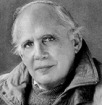 J.
Anthony Lukas (b. 4/25/1933, New York, d. 6/5/1997, New York) J.
Anthony Lukas (b. 4/25/1933, New York, d. 6/5/1997, New York)
Acclaimed Author and Journalist - Winner of
TWO Pulitzer Prizes! "One of America's most brilliant writers."
Lukas was known for the "excrutiating, almost
obsessive precision of his research." After graduating from Harvard
he worked as a reporter for the Baltimore Sun, then the New York Times.
He won his first Pulitzer in 1967 for an account of a wealthy teenager
found beaten to death in Greenwich Village by her counter-culture
boyfriend. His second Pulitzer was for "Common Ground,"
a 1985 book about race relations in Boston. Lukas also wrote in 1971
a book about another famous trial, "The Barnyard Epithet and
Other Obscenities: Notes on the Chicago Conspiracy Trial."
J. Anthony Lucas, two-time winner of Pulitzers, spent
the last seven years of his life researching and writing his 754-page
opus "Big Trouble," which will remain without question the
seminal study of one of America's most fascinating trials. On
the morning of June 5, 1997, Lukas met with his editor to discuss
final revisions to Big Trouble. He returned in the afternoon to his
Upper West Side apartment and hanged himself with a bathrobe sash.
He was 64 when he died. Lukas, who had been diagnosed with
depression ten years earlier, wrote a 1987 book "Silent Grief:
Living in the Wake of Suicide," inspired by his own pain of living
with the suicide of his mother, who had slashed her throat at age
33.
Many adjectives have been used to describe one of
America's most brilliant writers: decent, erudite, insightful, dedicated,
intense, energetic, inventive, sensitive, tender, self-righteous,
brooding, restless. A friend described Lukas as "the happiest
and the saddest man I know." Apart from his love of writing,
Lukas found happiness in gardening, baseball, and pinball (Lukas bought
his own machine: "The ball flies into the ellipse, into the playing
field -- full of opportunities.")
"Big Trouble" was Lukas's first attempt
at pure history, and the project left him full of self-doubt. He worried
that his book was too ambitious, that he wouldn't be able to get his
point across, that it didn't show his talents as well as "Common
Ground." As the Big Trouble neared completion in the
spring of 1997, friends worried that he seemed mentally and physically
exhausted. On the Monday before he died, Lukas called an editor
at Life who had assigned him the task of writing a piece on Caldwell,
Idaho's changes since the Steunenberg assassination and told him "he
didn't know what to write." Friends who knew Lukas said such
a thing had never happened before.
Trivia
- His uncle is Academy Award Winner, Actor Paul Lukas!
- Read about the Lukas
Prize at Columbia University or
- An
Interview with J. Anthony Lukas at the National Book Foundation
in which he mentions a story about his uncle, Paul Lukas
- Read "No Mere Journalist: The hard labors of J. Anthony
Lukas at Harvard
Magazine
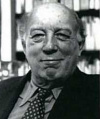 John
Lukacs (1/31/1924, Budapest) John
Lukacs (1/31/1924, Budapest)
Eminent Historian: Pulitzer Prize Nominated, Ingersoll
Prize Winner - "one of America’s
most respected historians - Yale"
Praised by critics as a historian who has the literary talents of
a novelist, John Lukacs is the author of more than 20 books, including
The Hitler of History (1997), in which Lukacs studies German Chancellor
Adolf Hitler's life by examining the more than one hundred biographies
written about him. A recipient of the Ingersoll Prize, his other books
include The Great Powers and Eastern Europe (1954); A History of the
Cold War (1961); Outgrowing Democracy: A Historical Interpretation
of the U.S. in the 20th Century (1984); and The Duel (Hitler vs. Churchill
(1991); Churchill: Visionary. Statesman. Historian; The End of the
Twentieth Century; the End of the Modern Age (nominated for the Pulitzer
Prize); and A New Republic, a major statement on the nature of our
political system and a critical look at the underpinnings of our society:
American democracy, says John Lukacs, has been transformed from an
exercise in individual freedom and opportunity to a bureaucratic system
created by and for the dominance of special groups..
Lukacs served from 1947–94 as professor of history at Chestnut
Hill College, and as its department chair from 1947–74. He also
served as a visiting professor at many universities, including Columbia,
Princeton, Johns Hopkins University, and at the University of Budapest
in his native Hungary.
- Purchase his books at Yale
University Press
- Read "The
Triumph and Collapse of Liberalism"
 Ilona
Massey (Hajmássy) - (b. 6/16/1910, Budapest, d. 8/20/1974,
Bethesda. MD) Ilona
Massey (Hajmássy) - (b. 6/16/1910, Budapest, d. 8/20/1974,
Bethesda. MD)
"Breathtakingly beautiful" Actress, Star of MGM Musical
"Balalaika" and more! Hal Erickson,
All Movie Guide, writes, "Ilona Massey was born into poverty
in Budapest; her father, a typesetter was left an invalid in WW I.
With her meager earnings as a dressmaker's apprentice, Massey studied
singing. She went on to perform at the Vienna Stratsoper then made
her screen bow in two Austrian musical films. Conflicting reports
state that either Massey wasn't interested in films until she was
spotted by MGM executive Louis B. Mayer while she was appearing in
a Stratsoper production of Aida, or that she eagerly submitted her
publicity photos to MGM in the hopes of meeting her "idol"
Nelson
Eddy. Another variation of the legend has her meeting a producer
at a party, then being invited to audition for Mayer. Whatever the
case, Massey was cast opposite Nelson
Eddy and Eleanor
Powell in the MGM musical Rosalie
in 1937. At first, she spoke no English and had to learn her lines
phonetically. By the early 1940s, she was conversant enough in her
second language to star on the network radio series Top Secret.
Massey made only 11 films during her Hollywood career;
her favorite was Balalaika
(1939), while her least characteristic were Frankenstein
Meets the Wolfman (1943) and the Marx
Brothers' Love
Happy (1950). On Broadway, she co-starred with Milton
Berle and Arthur
Treacher in the 1943-44 revival of The Ziegfeld Follies. On TV,
she starred in the 1952 adventure weekly Rendezvous
and hosted the 1953 variety series The Ilona Massey Show. Off camera,
she was extremely active in anti-communist causes, especially after
the 1956 Hungarian uprising; at one point, she picketed the United
Nations, demanding the expulsion of visiting Soviet premiere Nikita
Khrushchev. Among her many husbands was film actor Alan
Curtis. Ilona Massey's last husband was retired Air Force general
Donald S. Lawson, a union that entitled her to treatment at Bethesda
Naval Hospital, where she died in 1974 after a three-month illness."
- See Yahoo!
to buy her movies and read more!
|